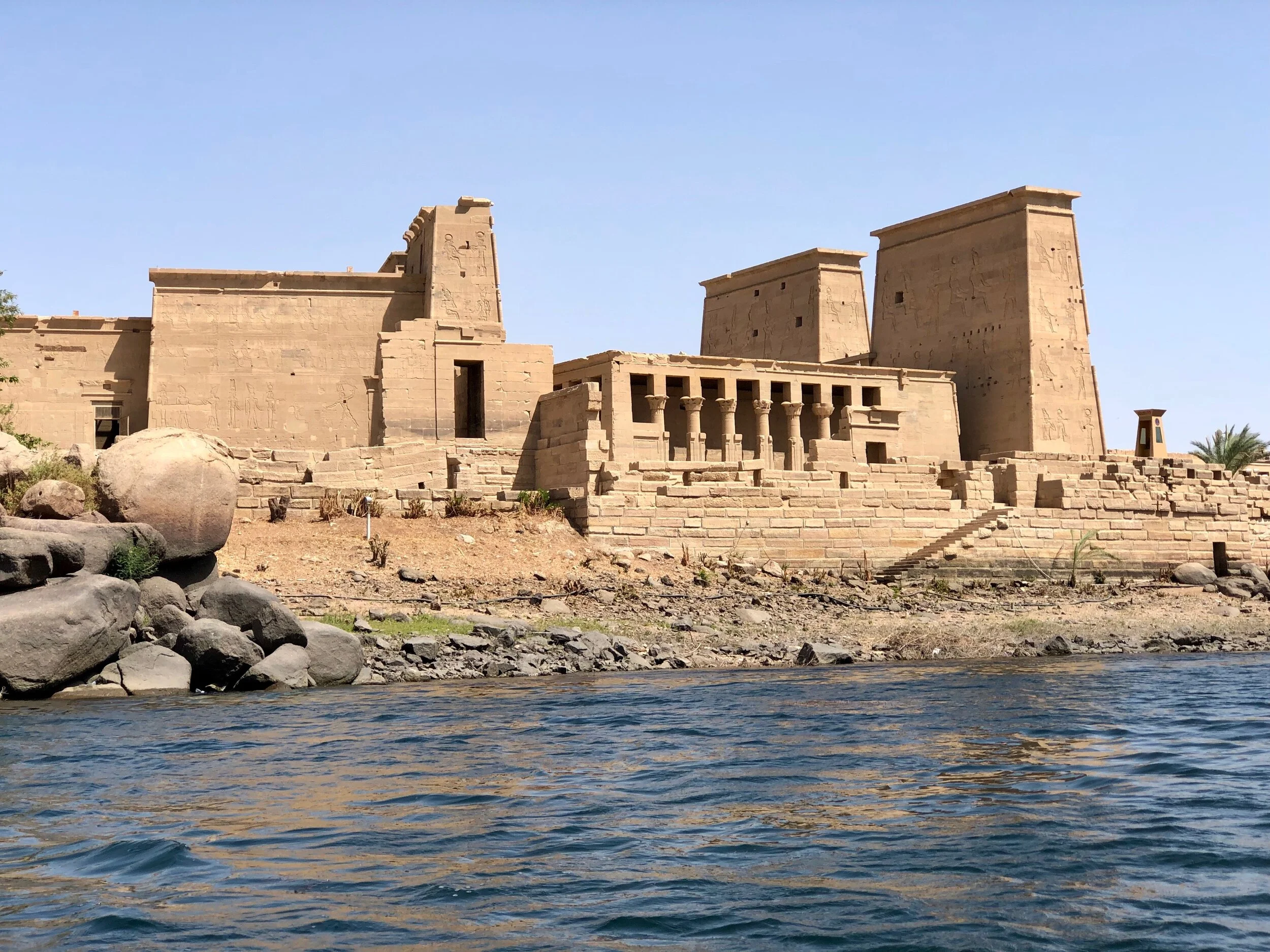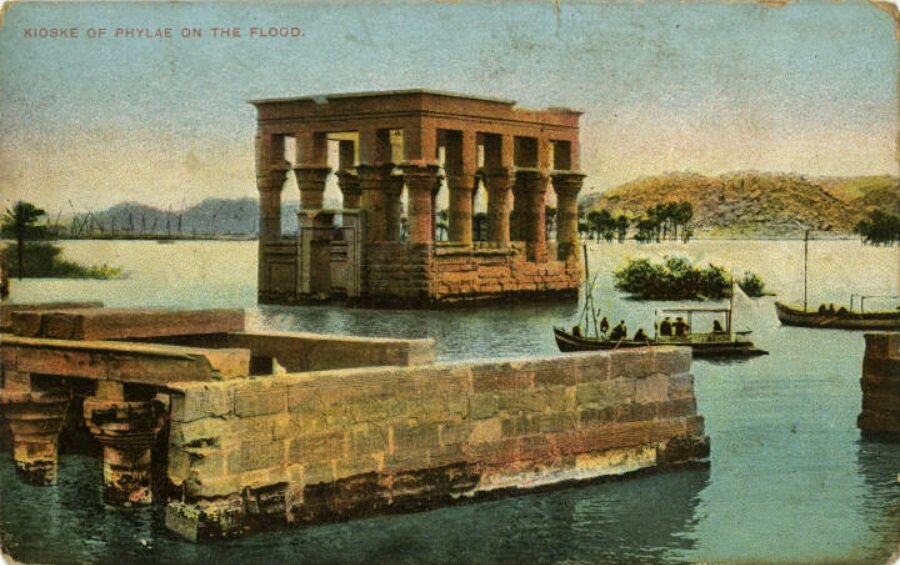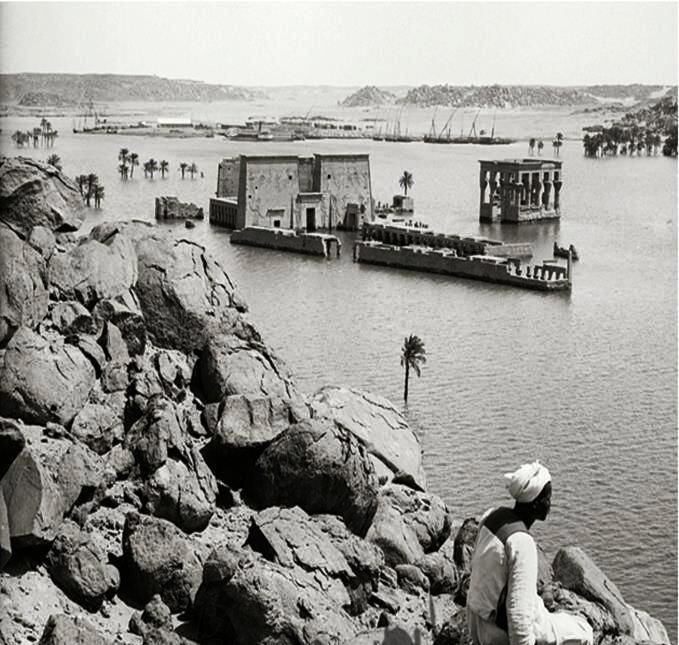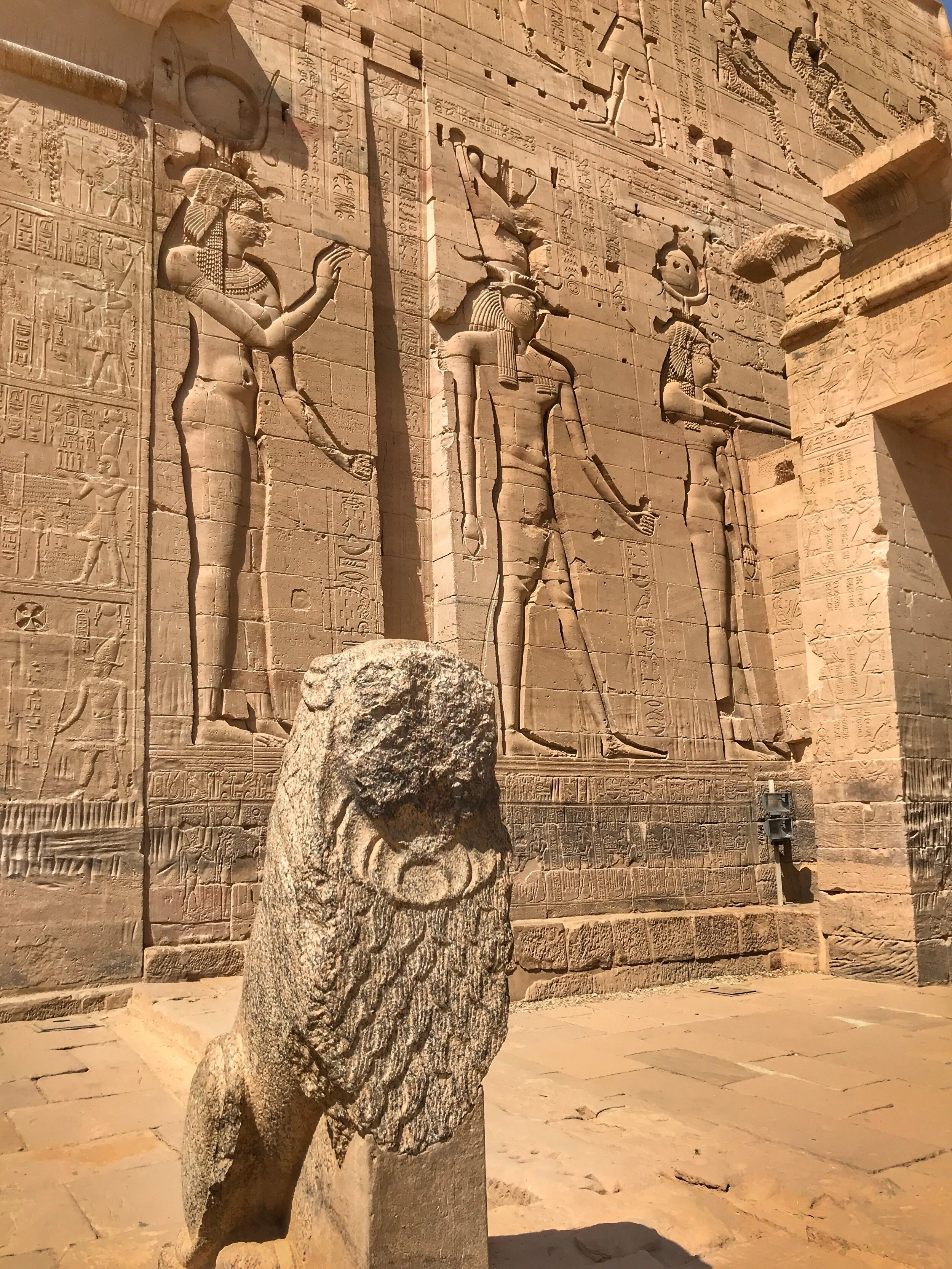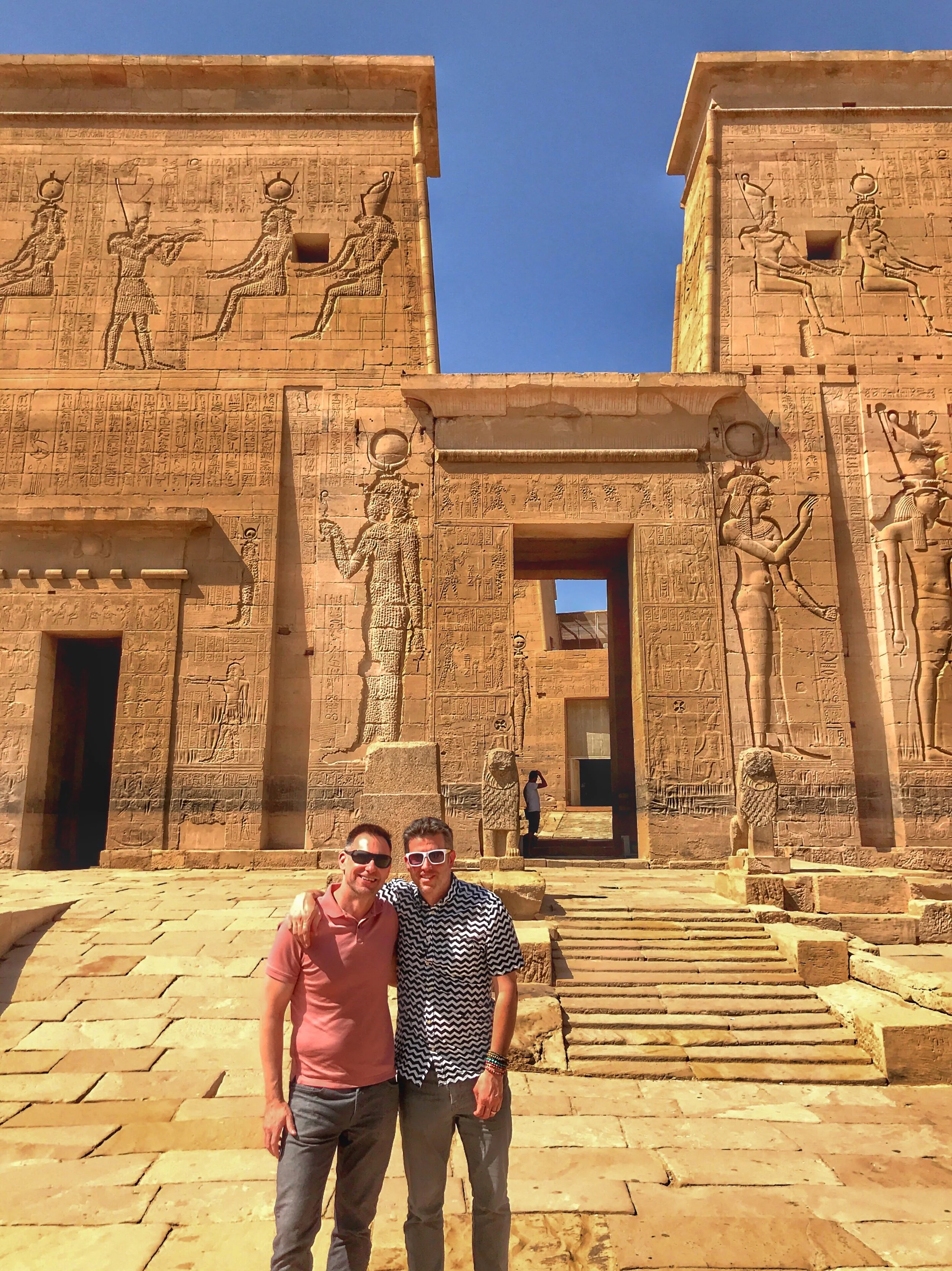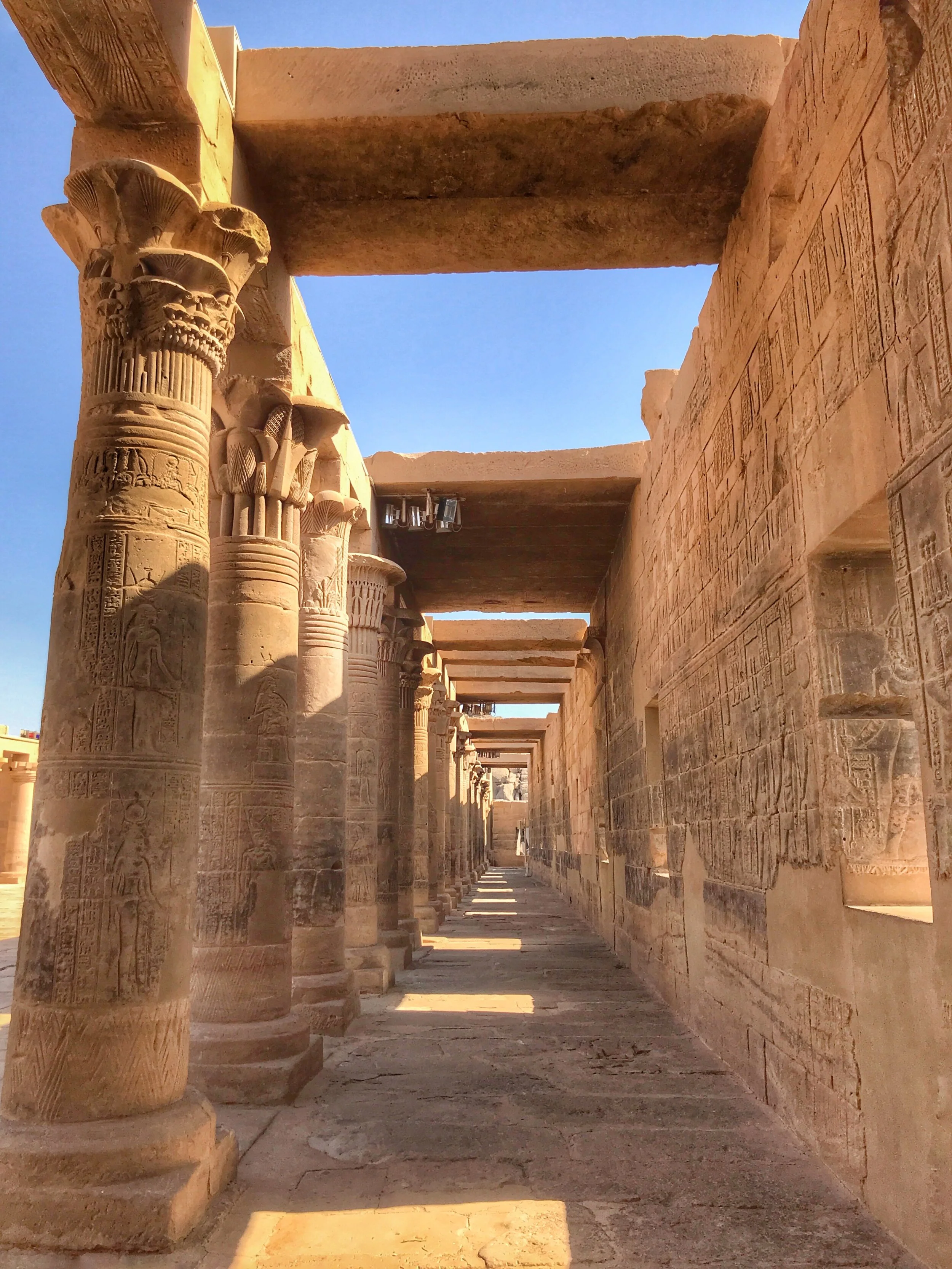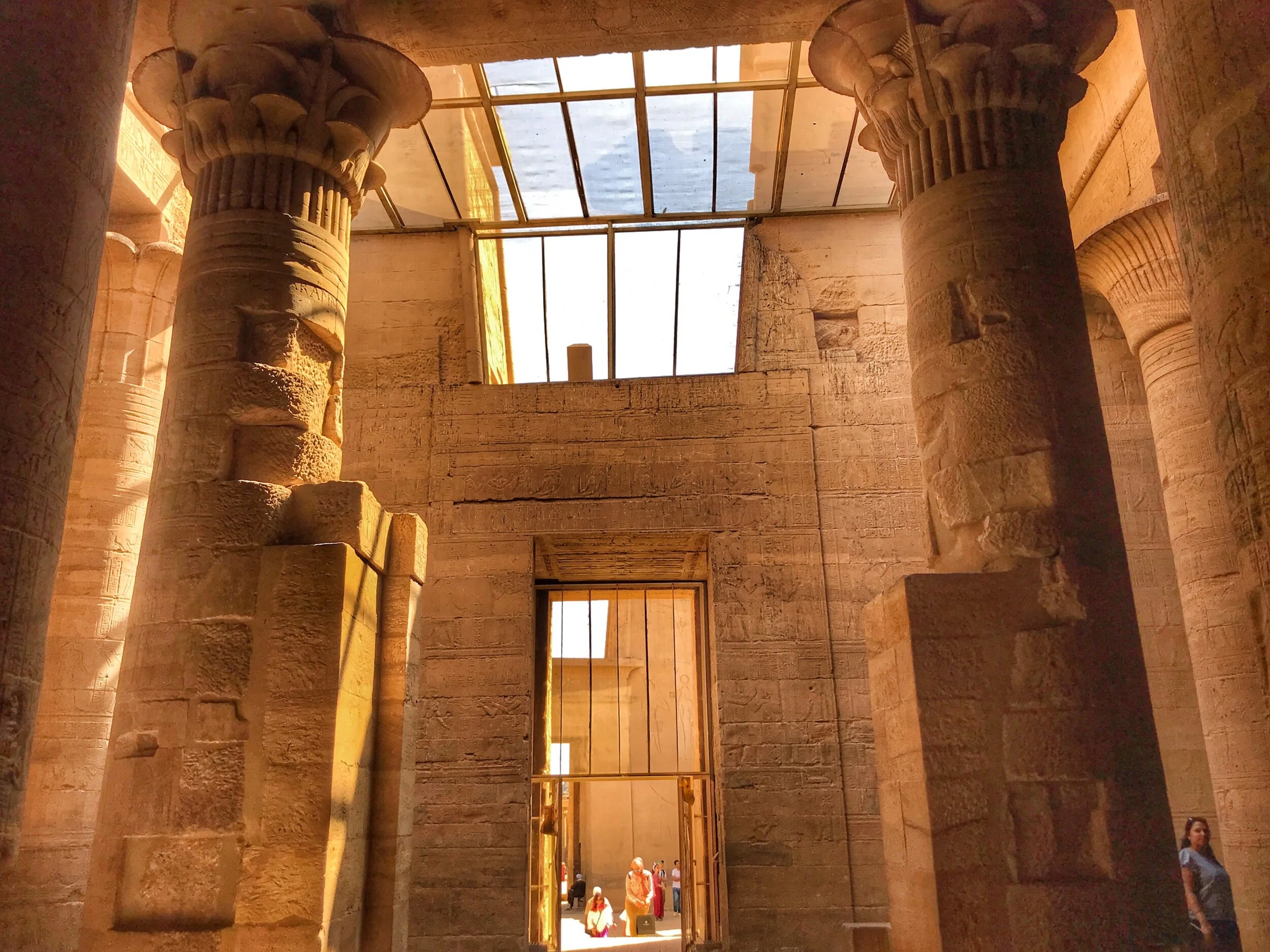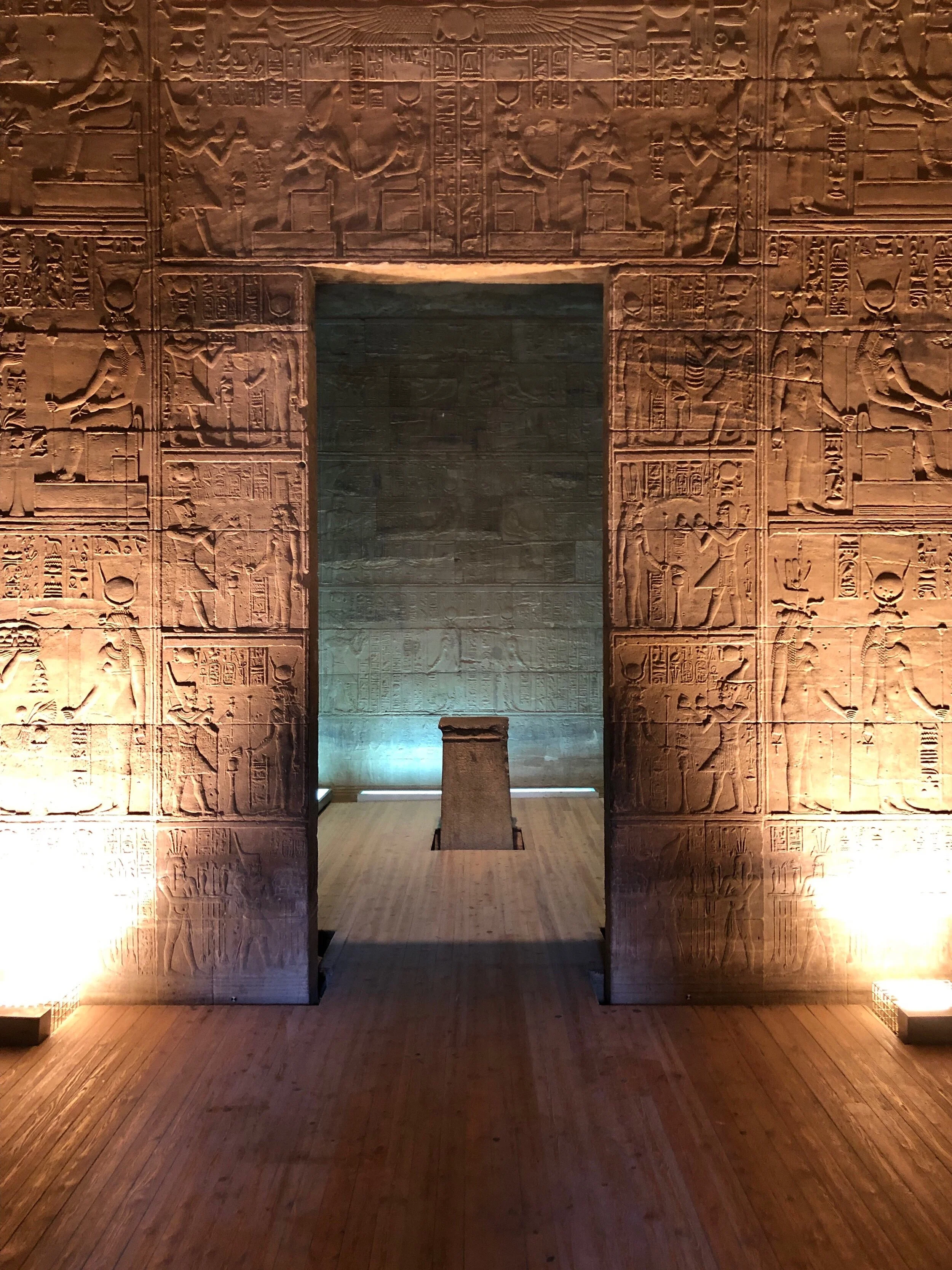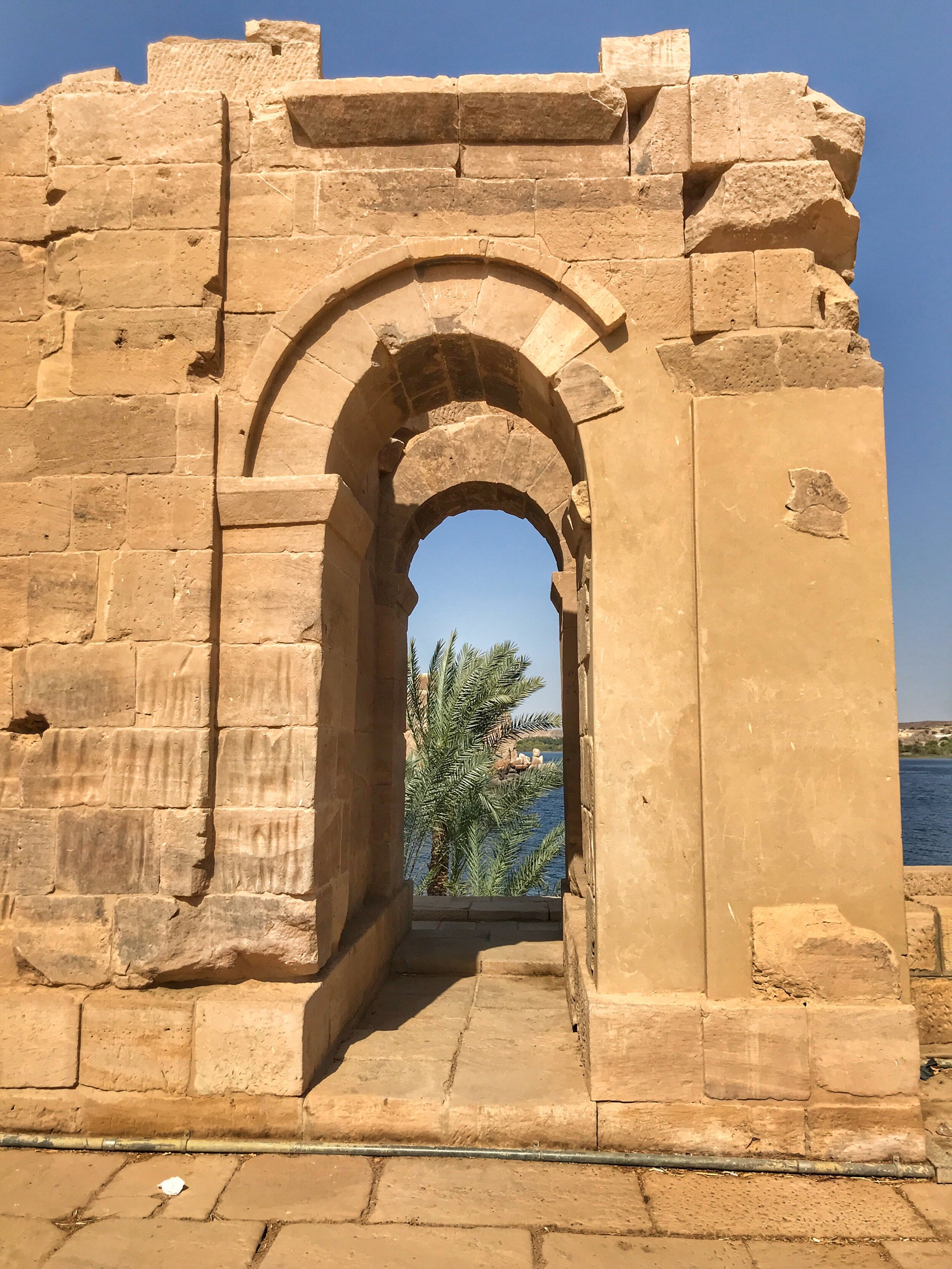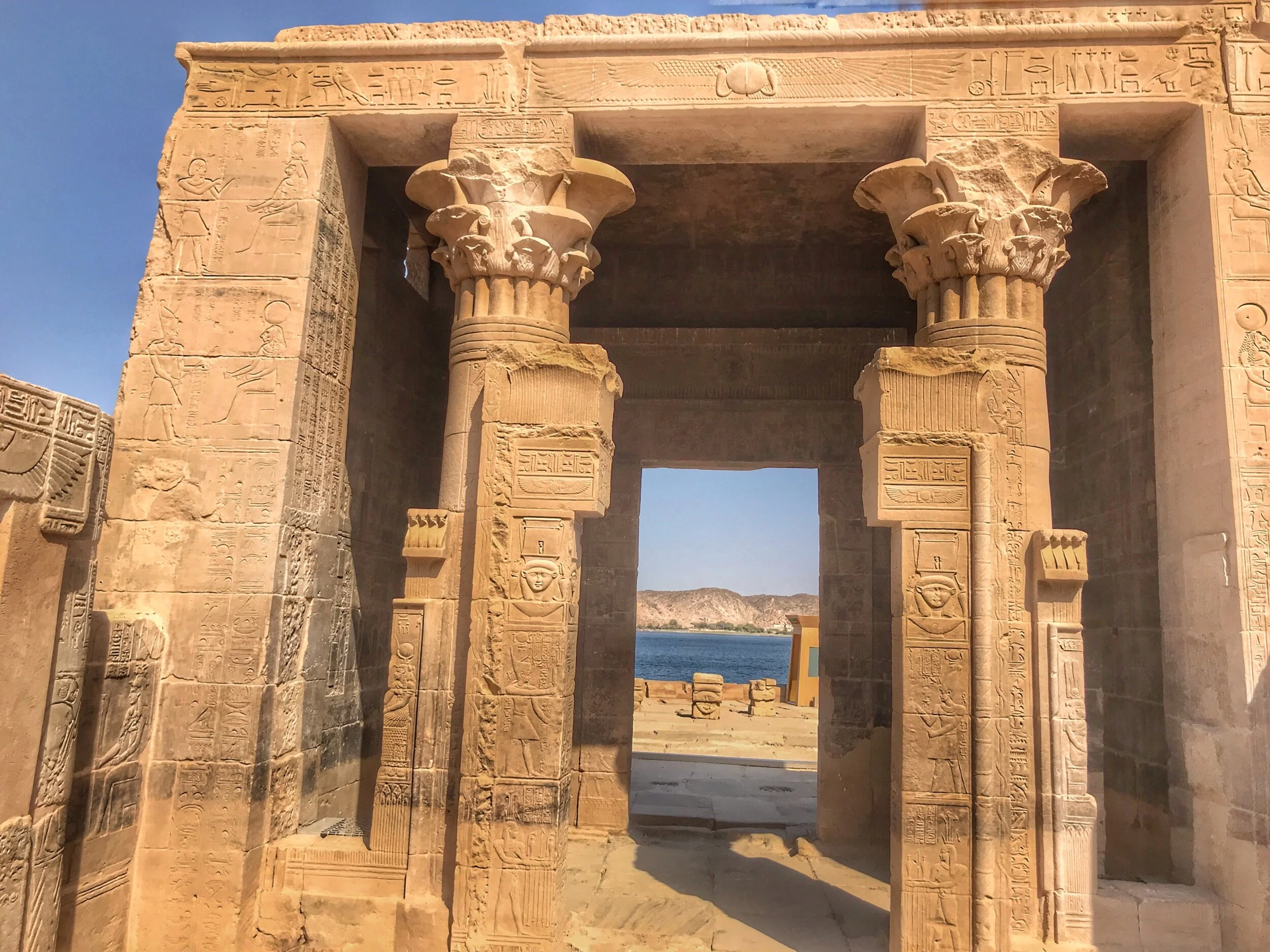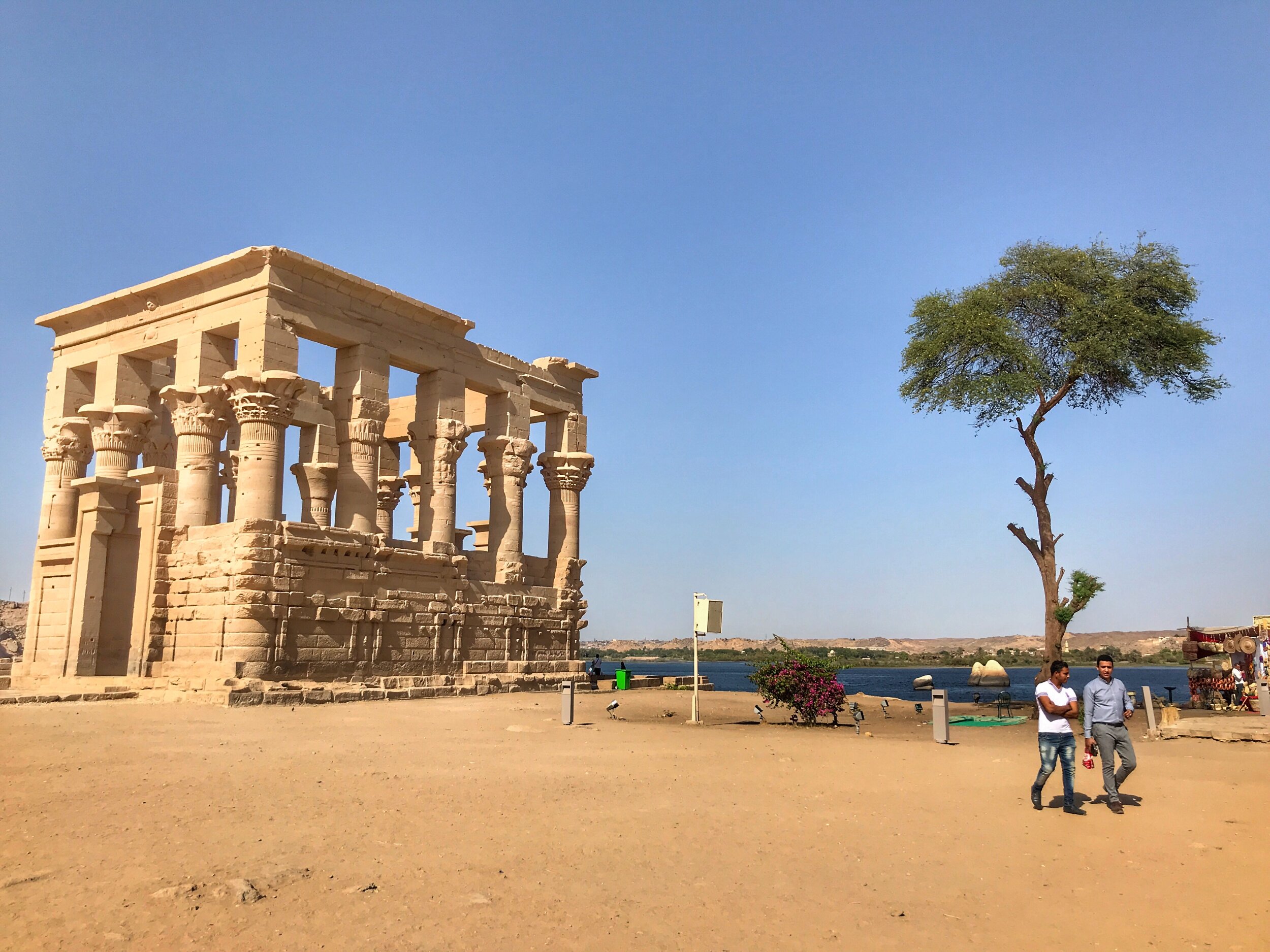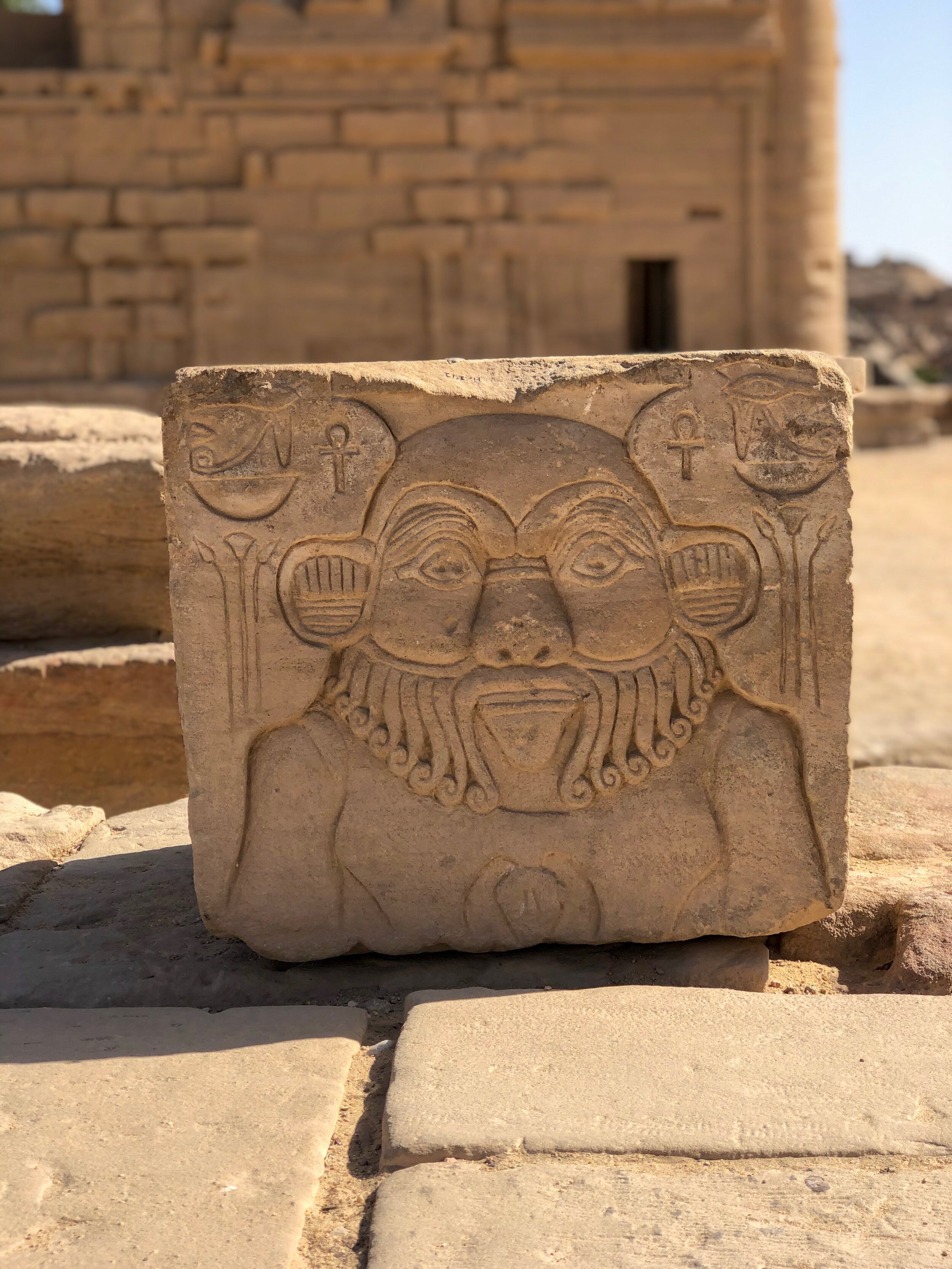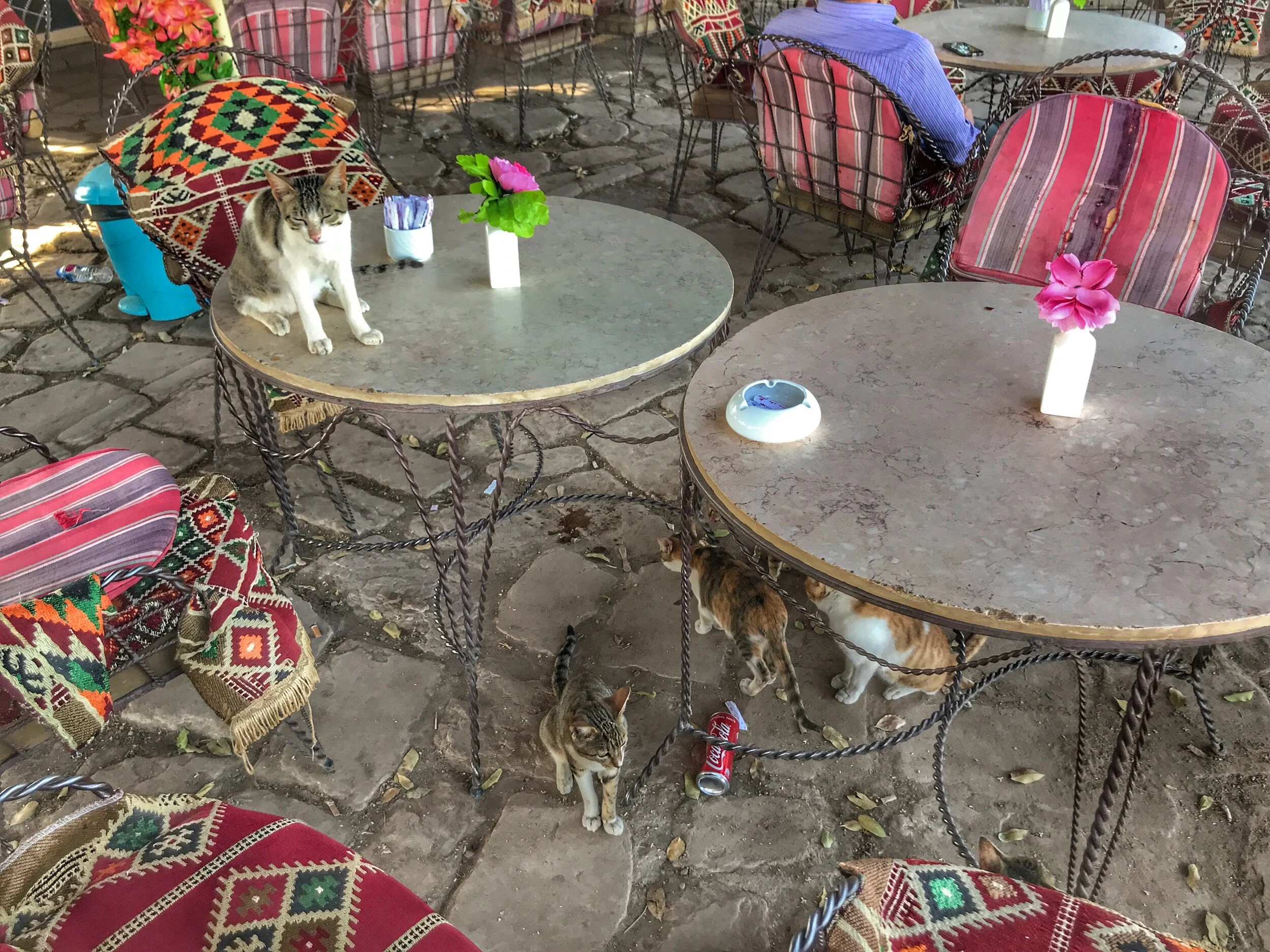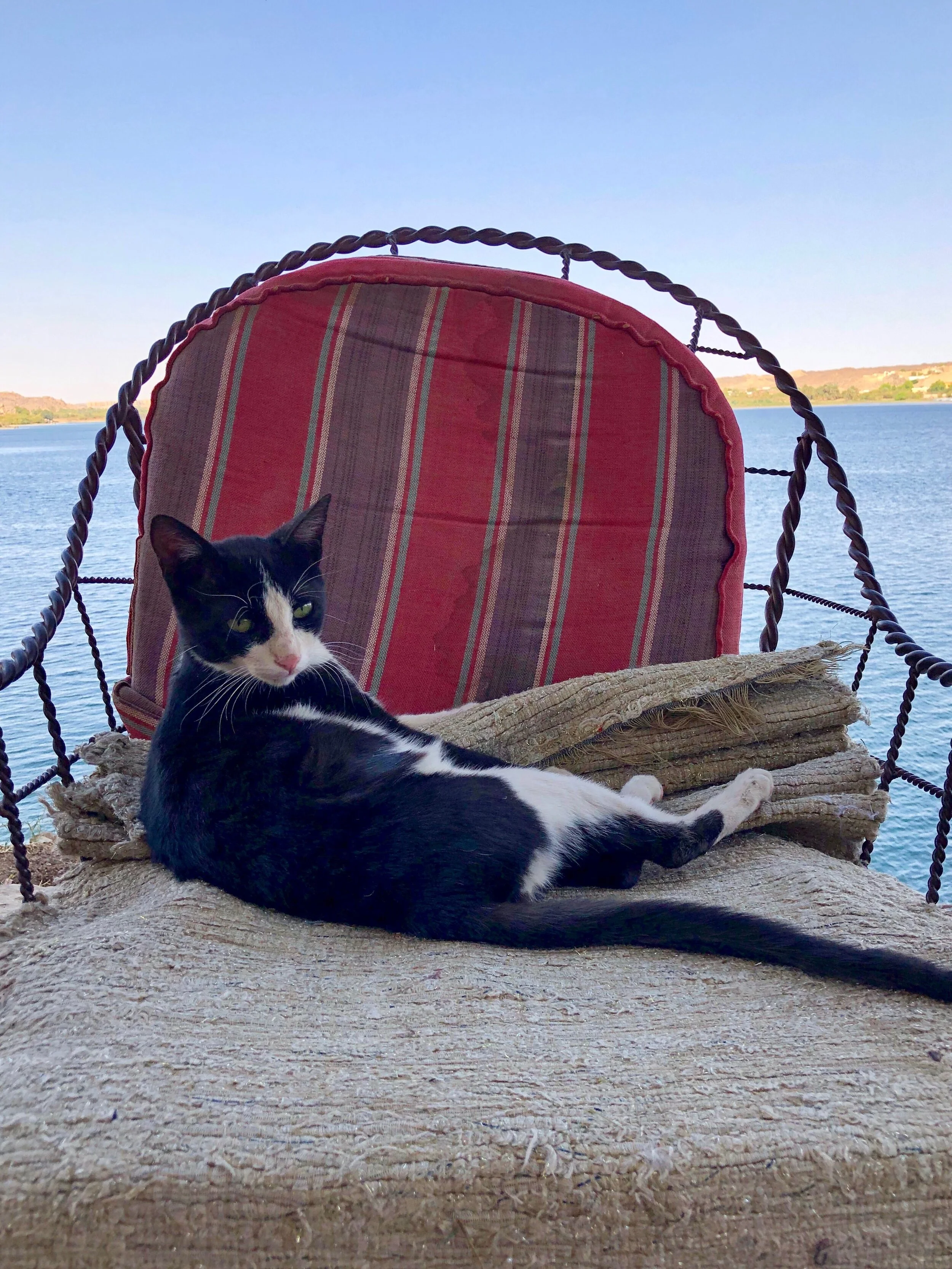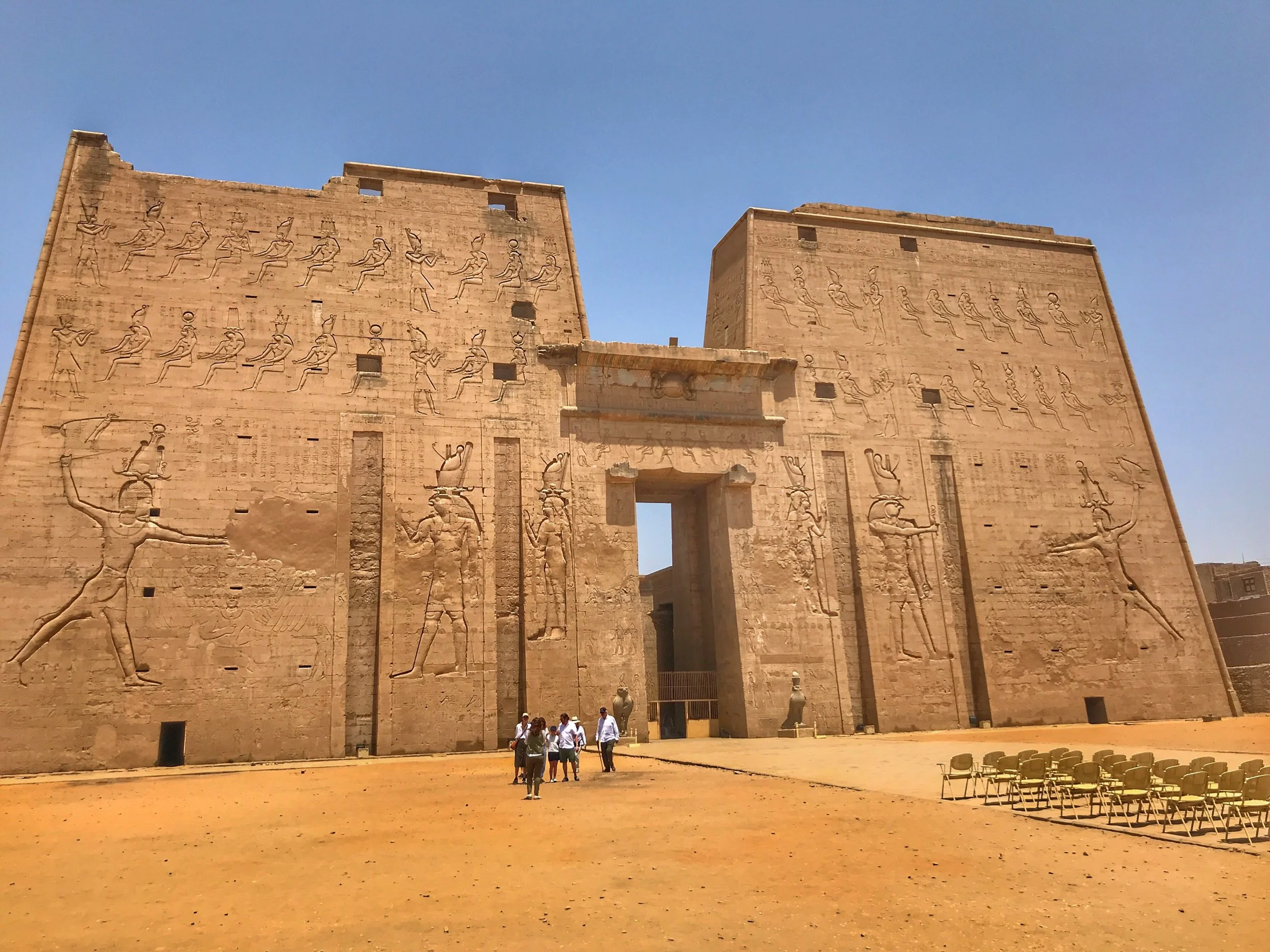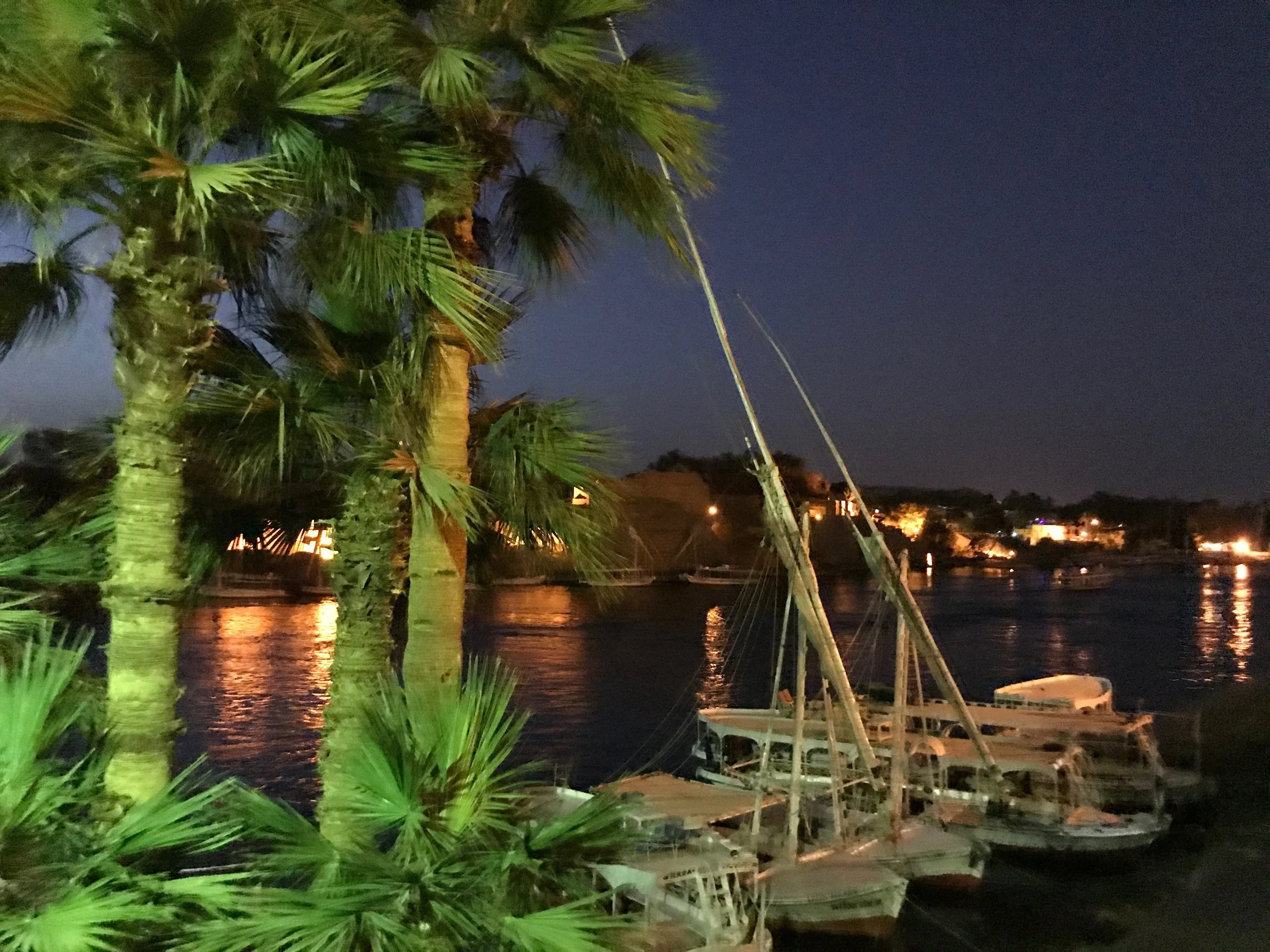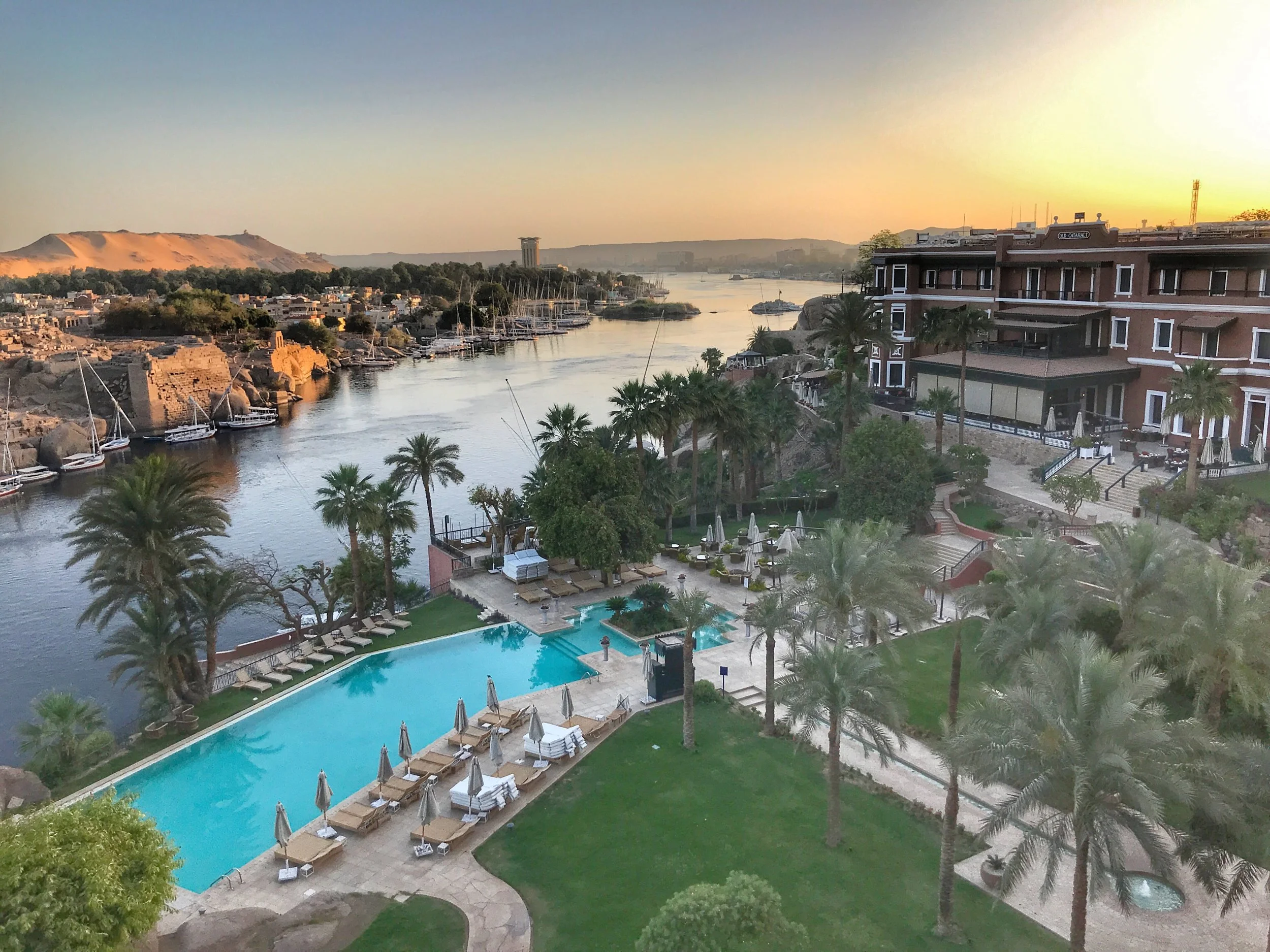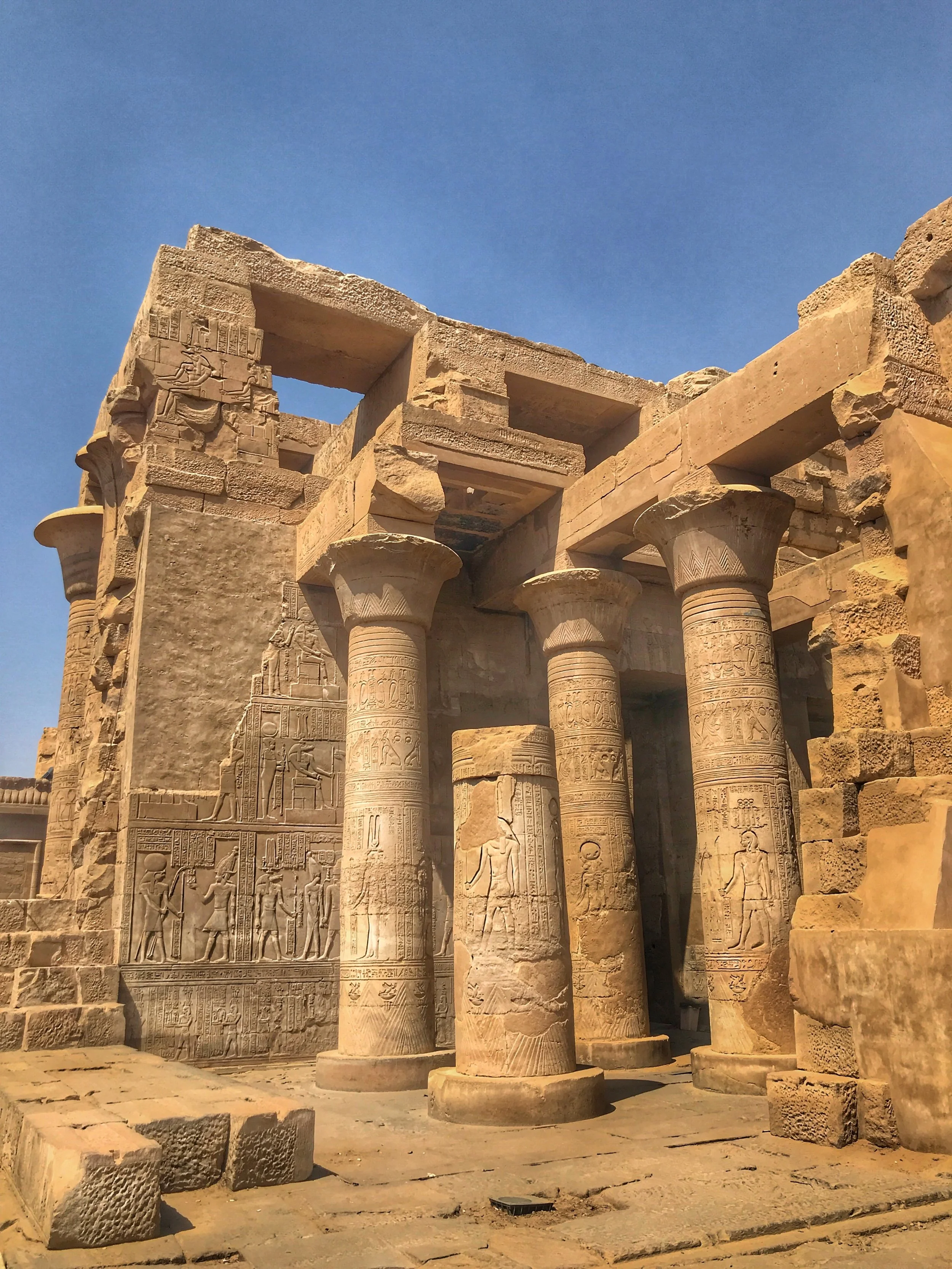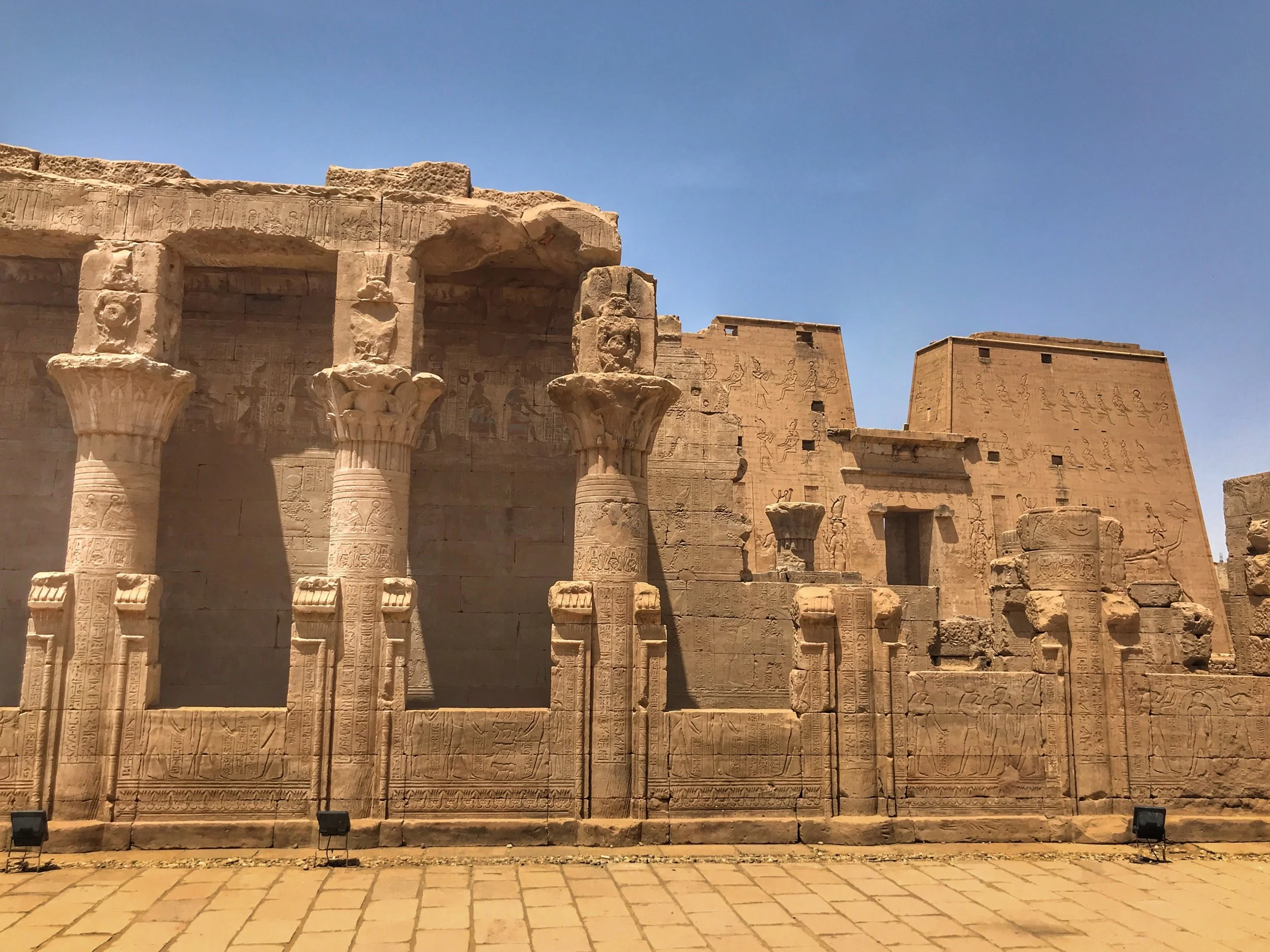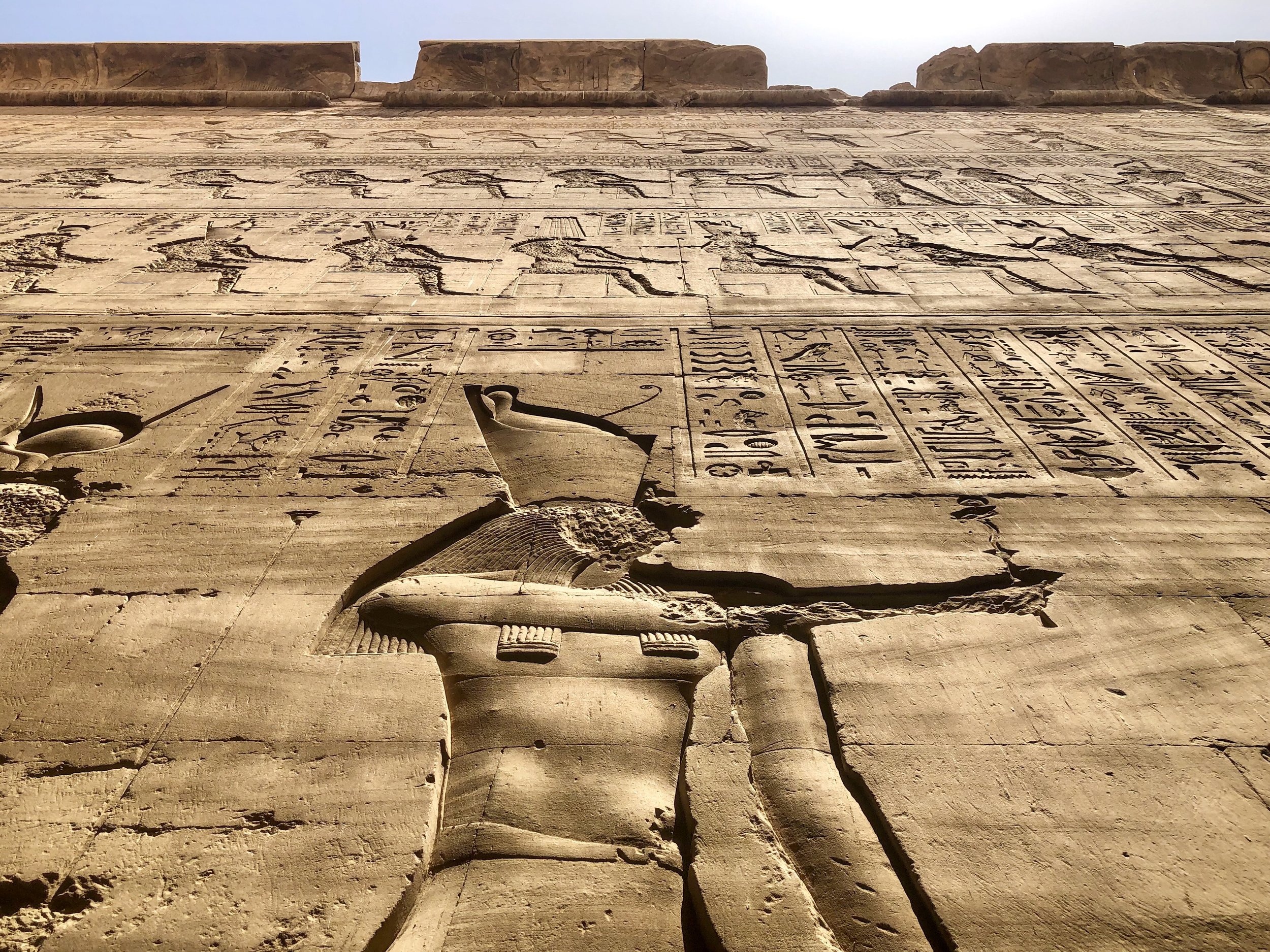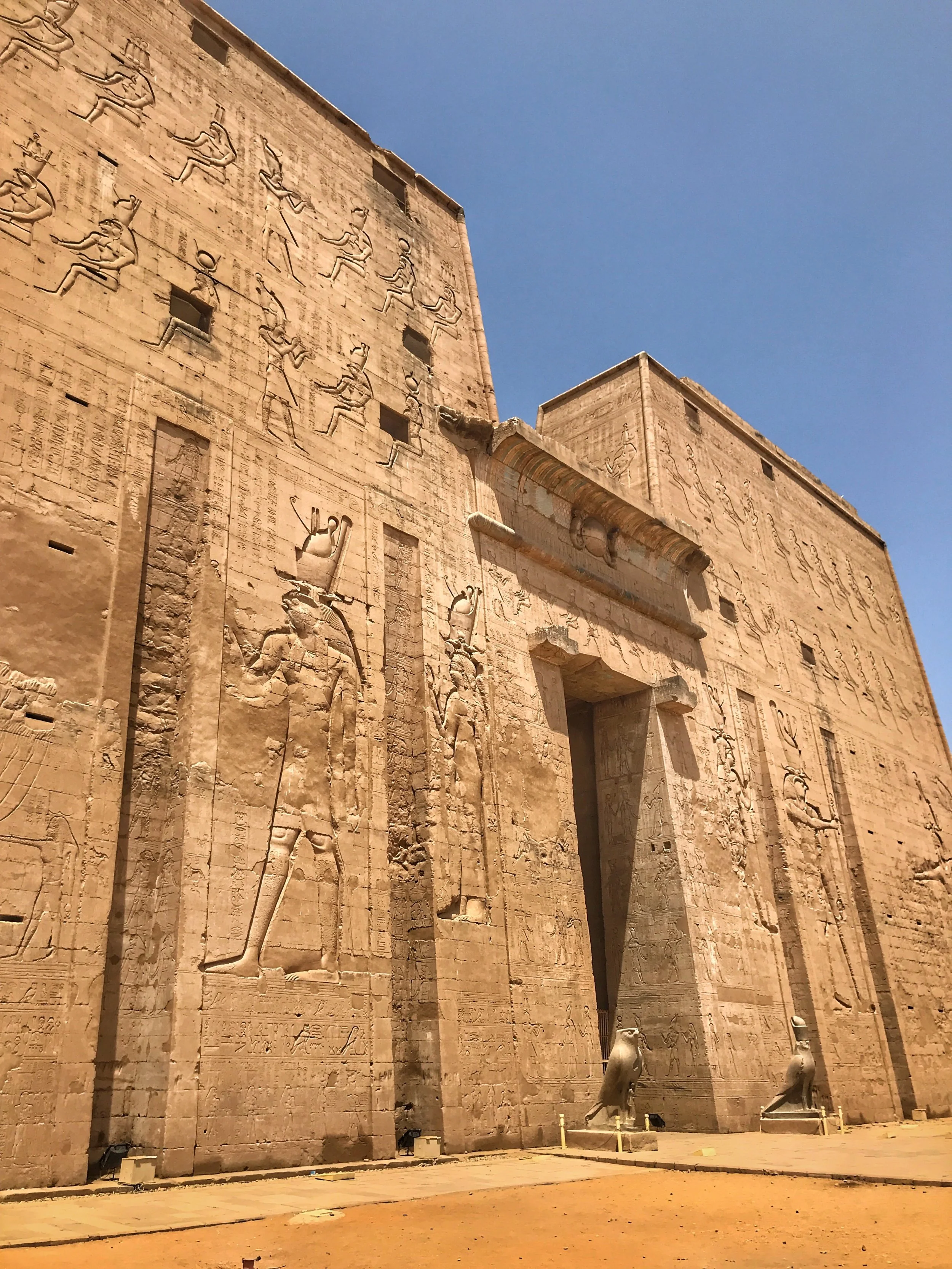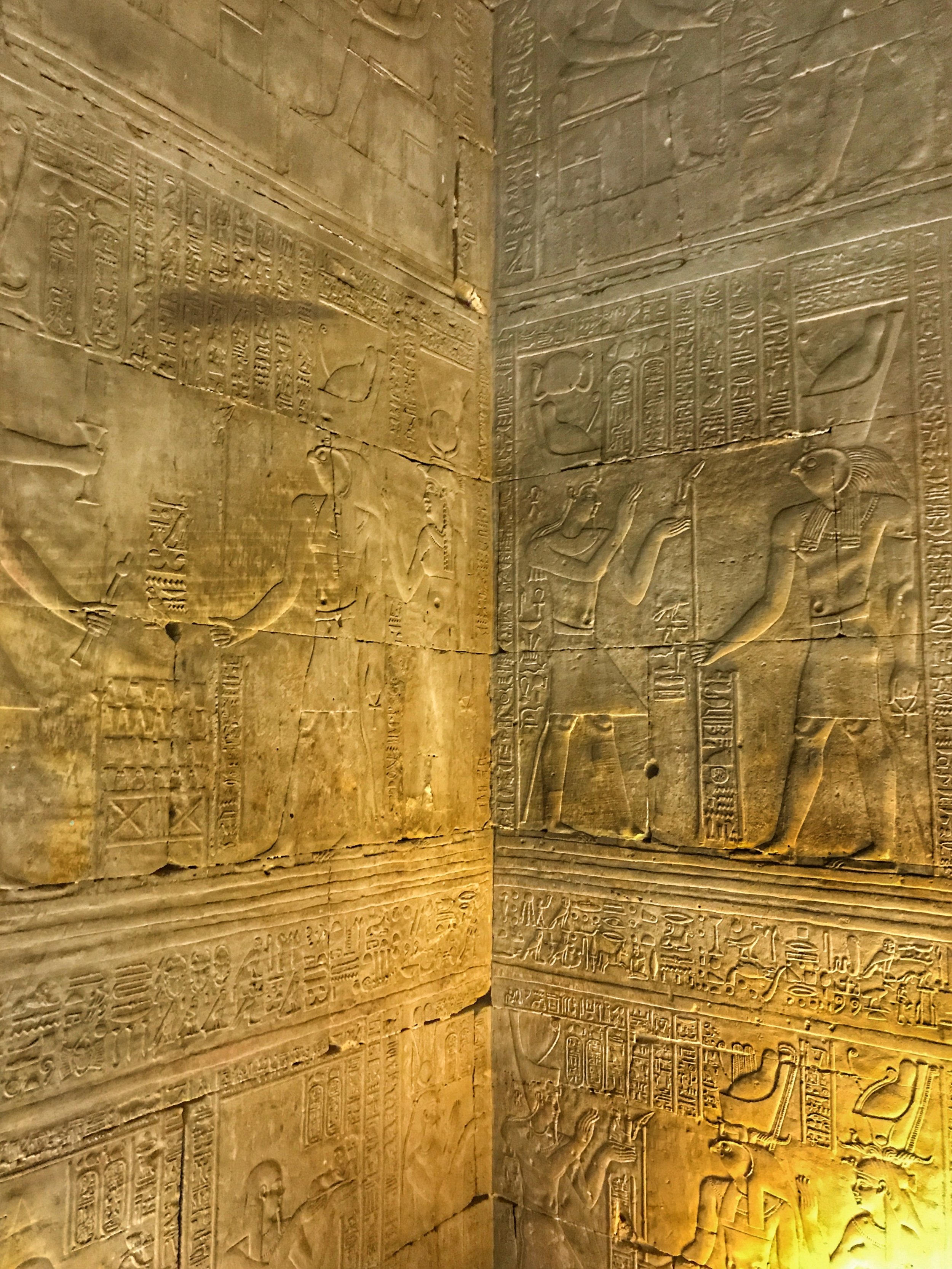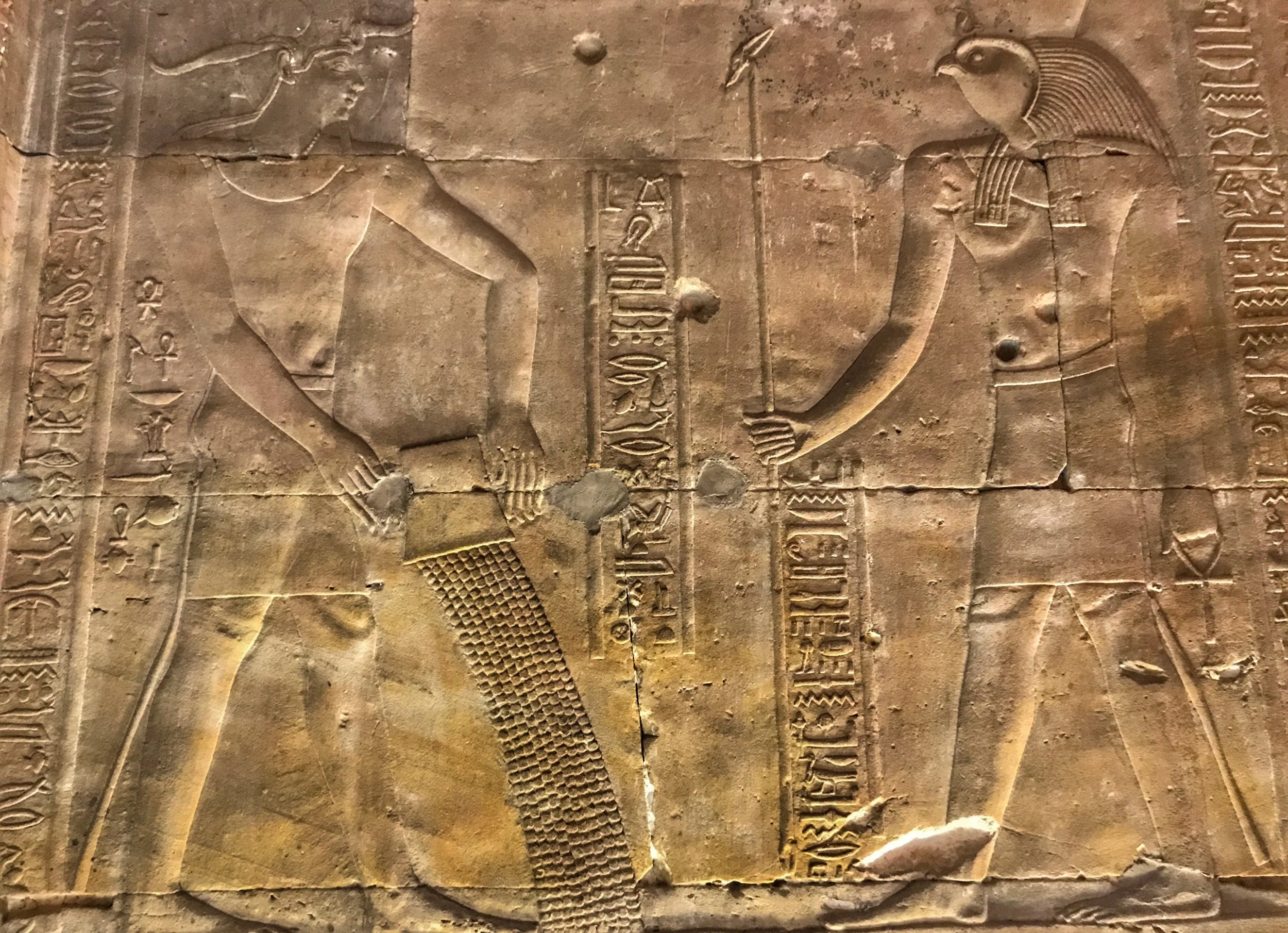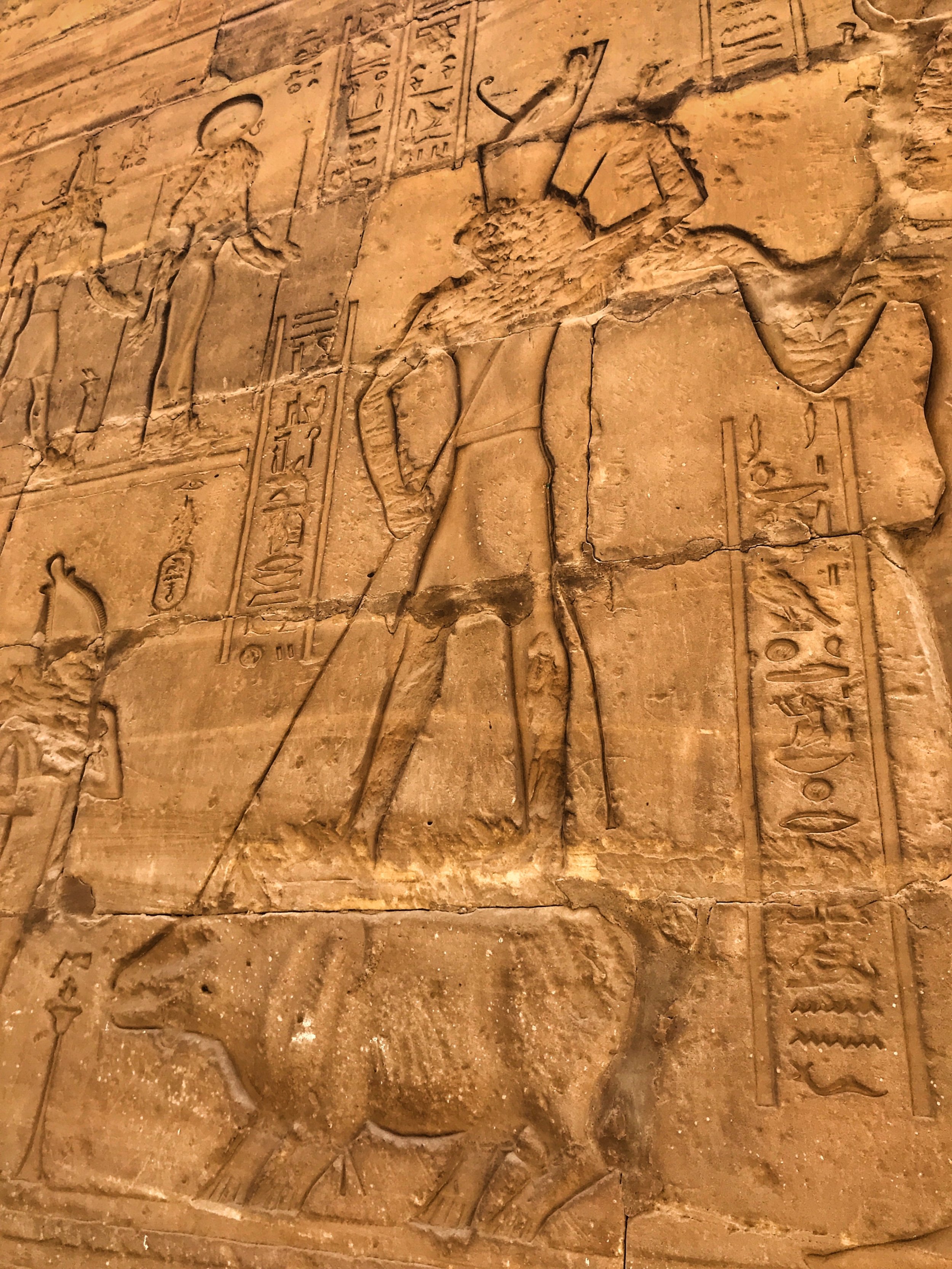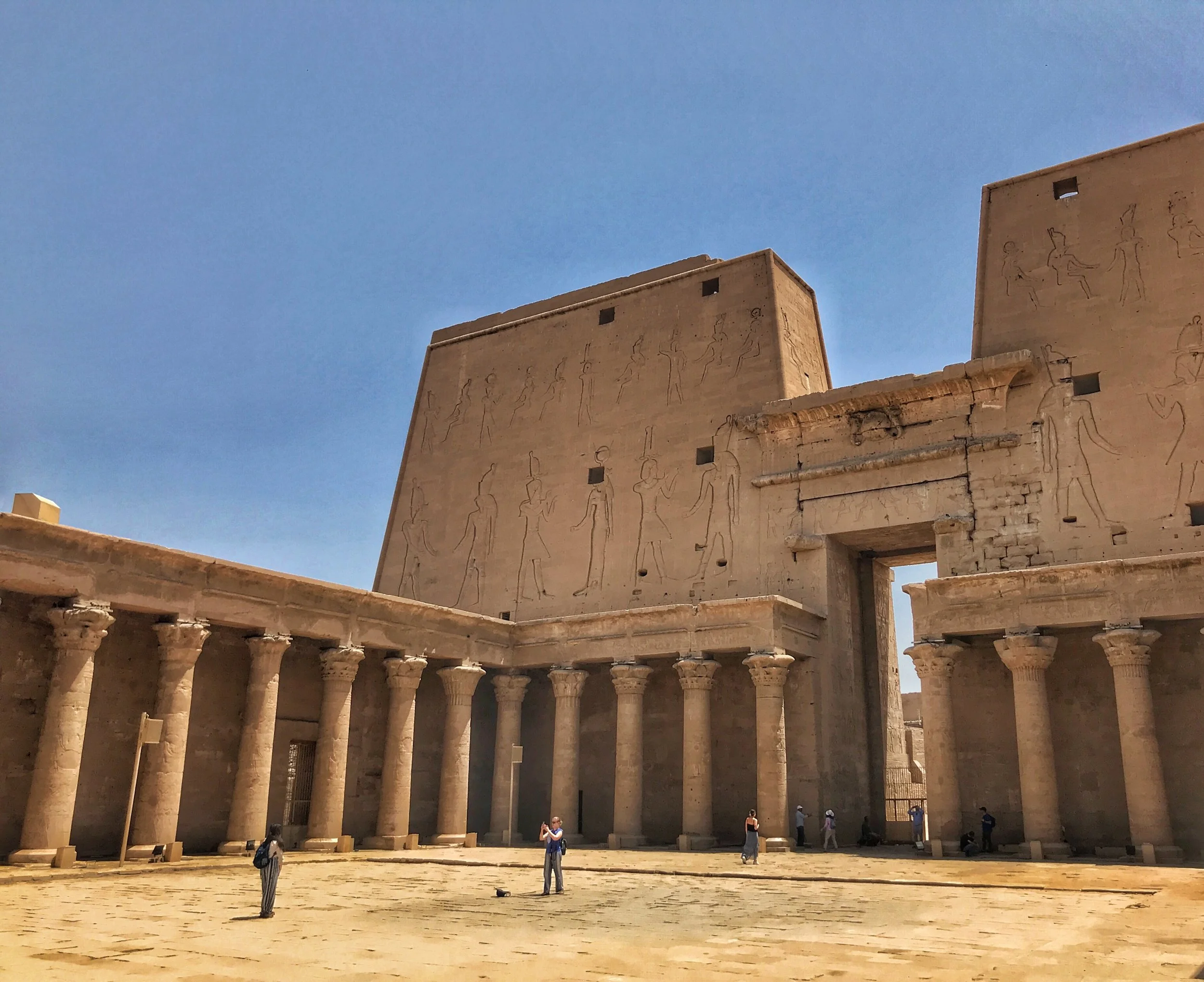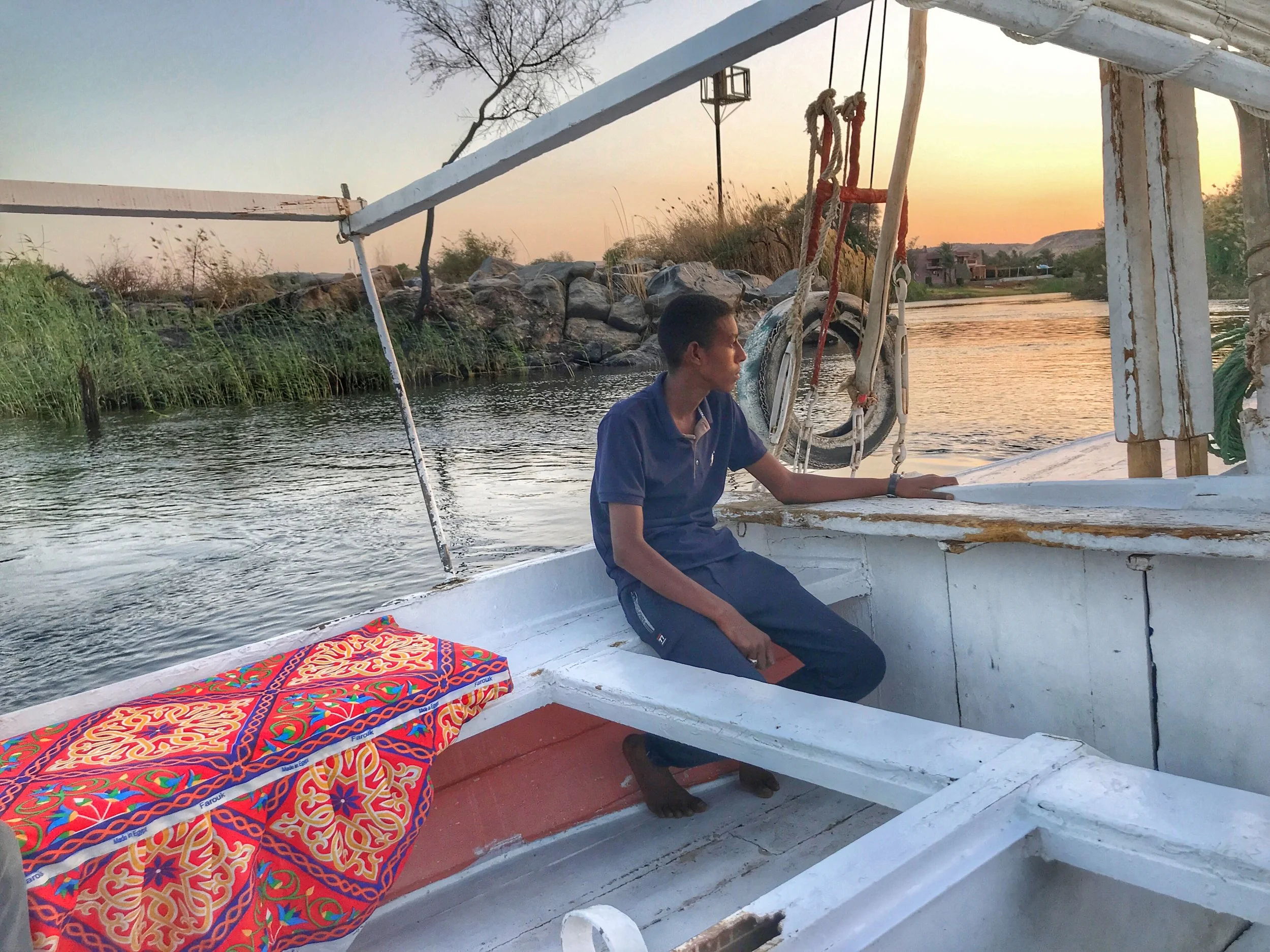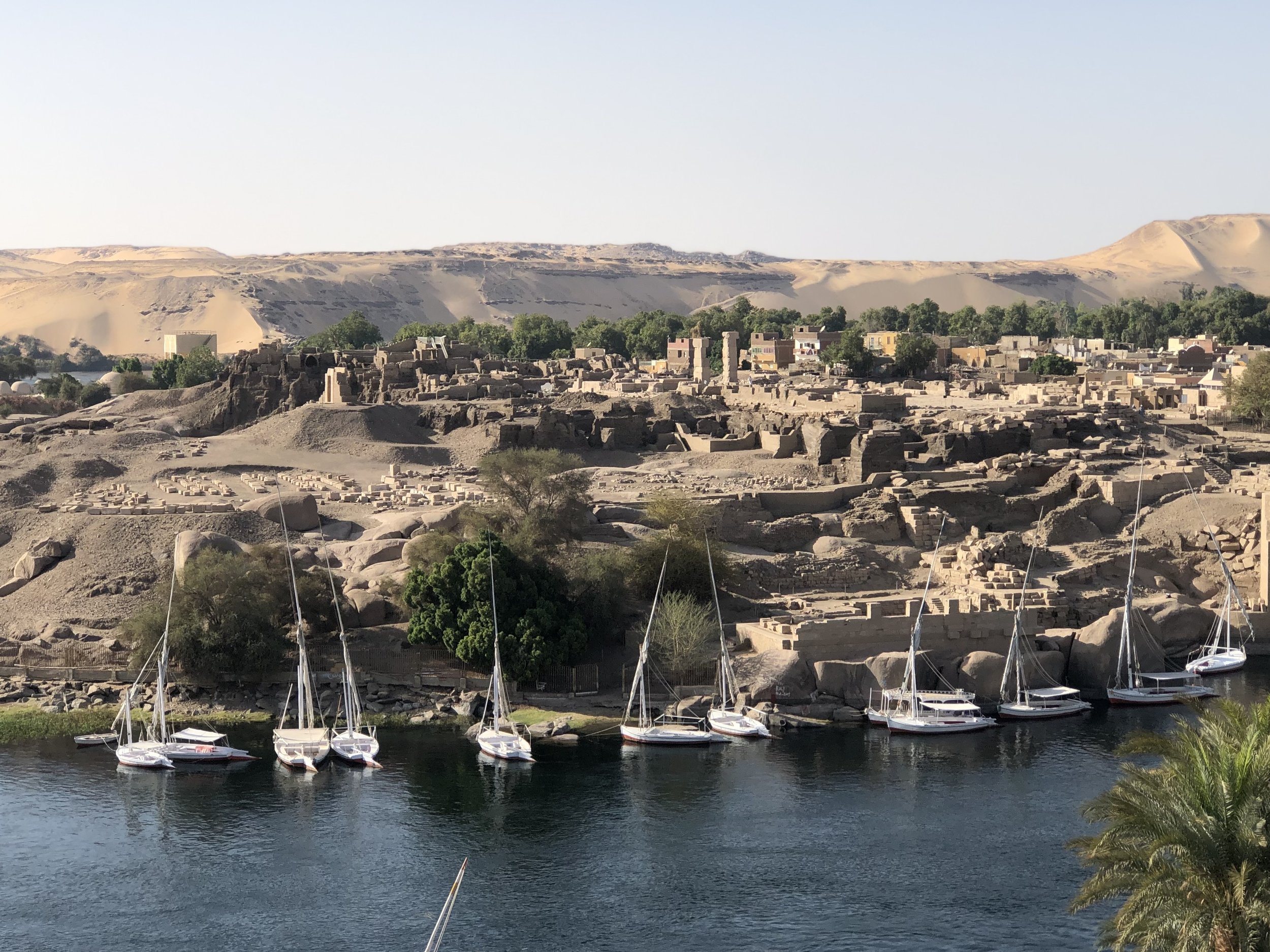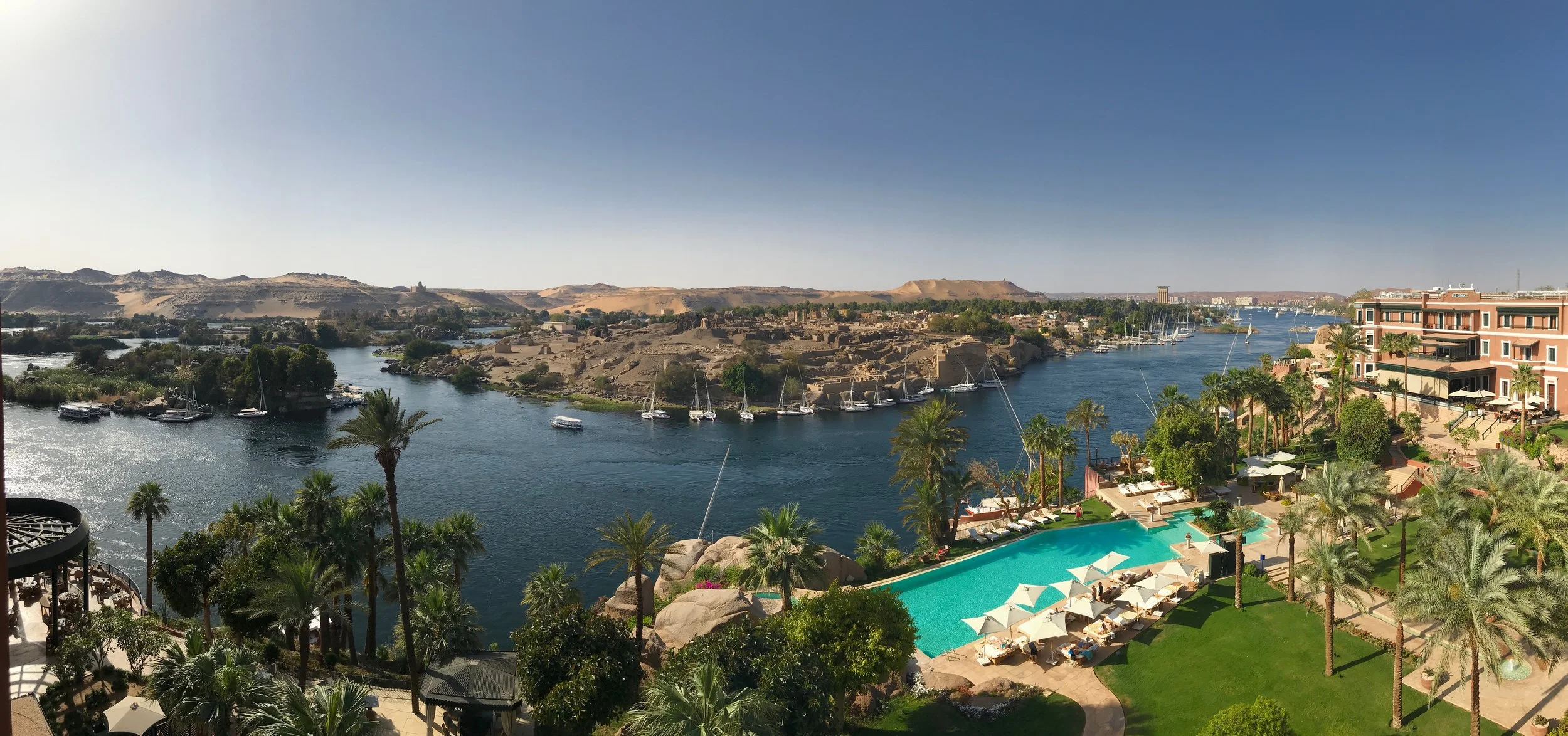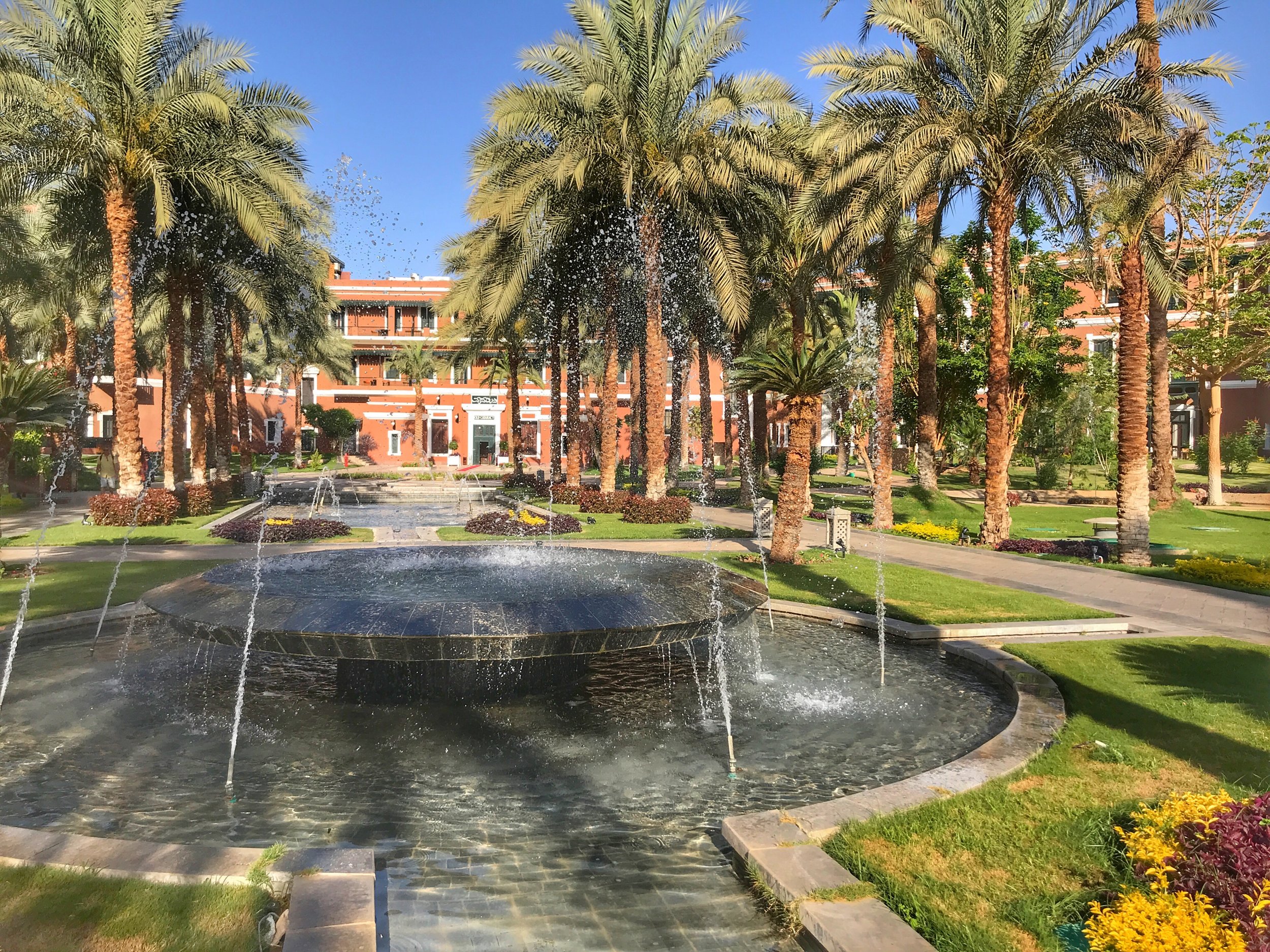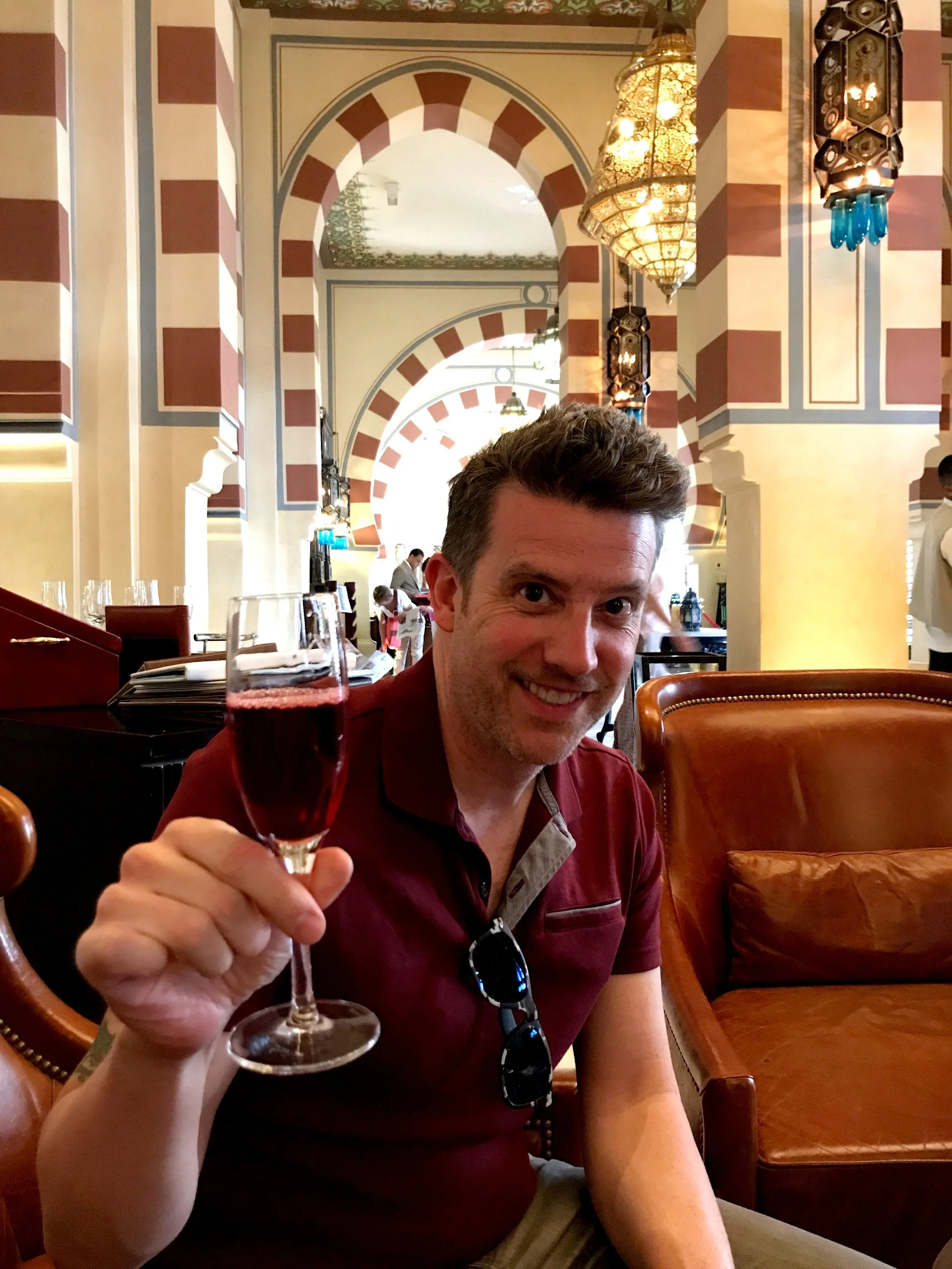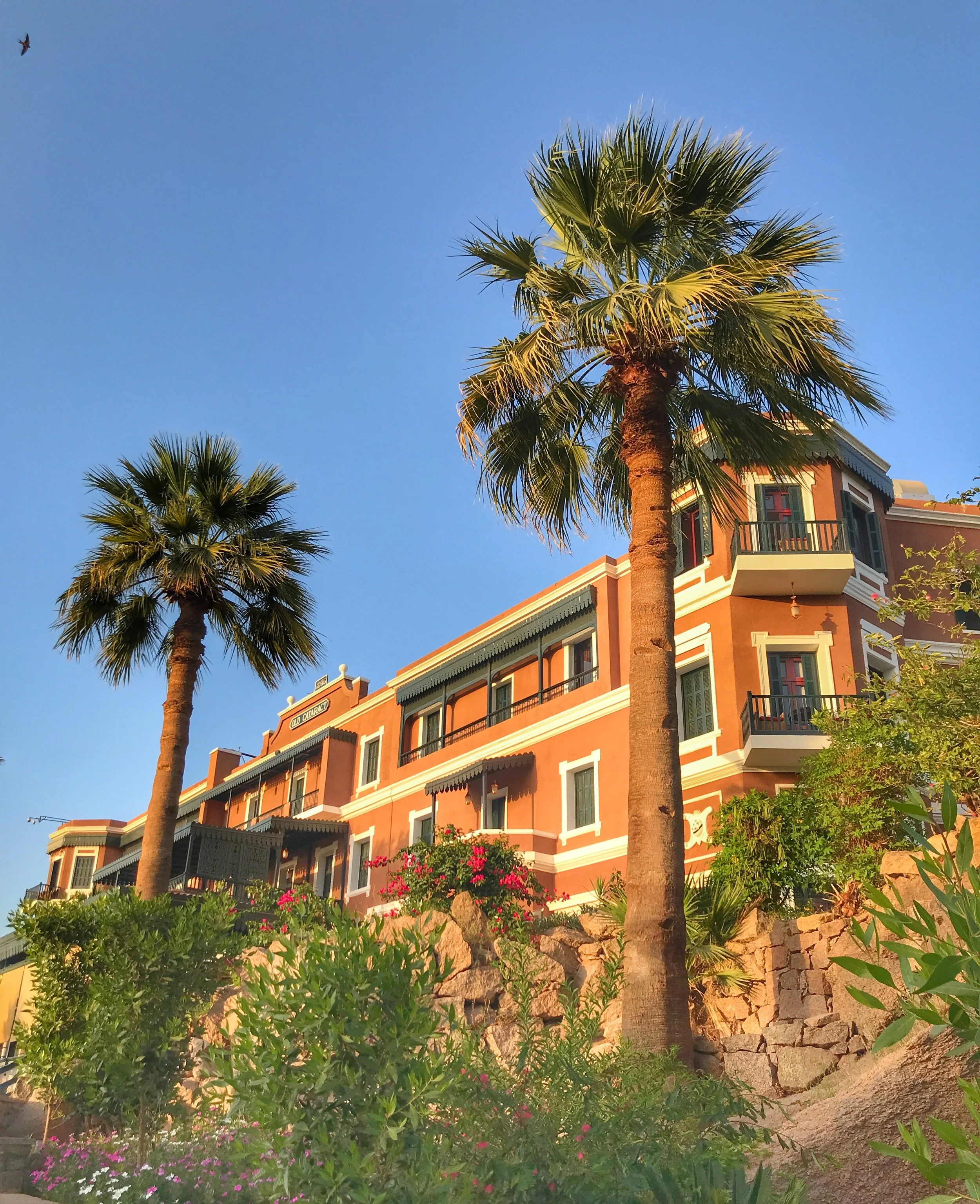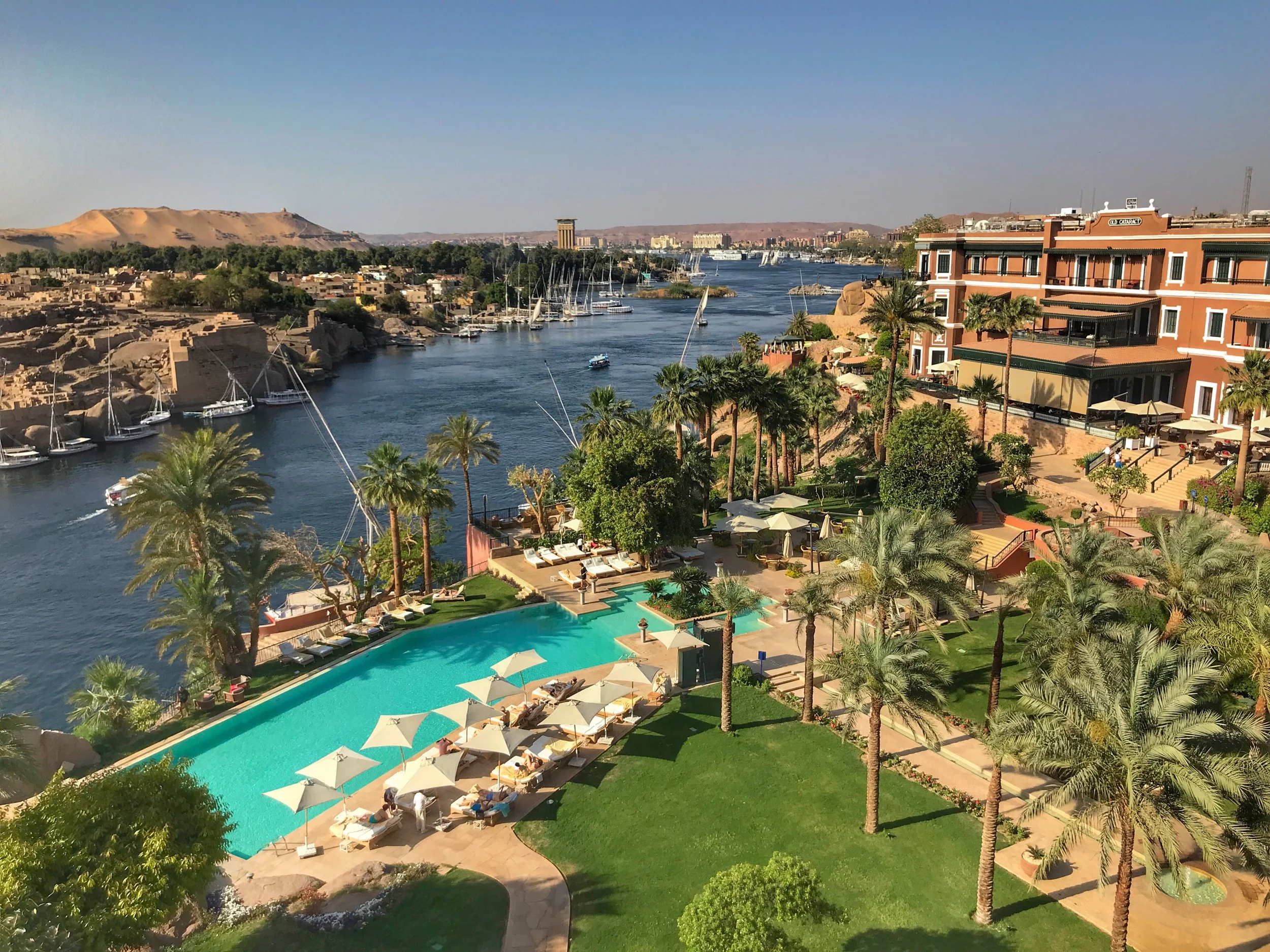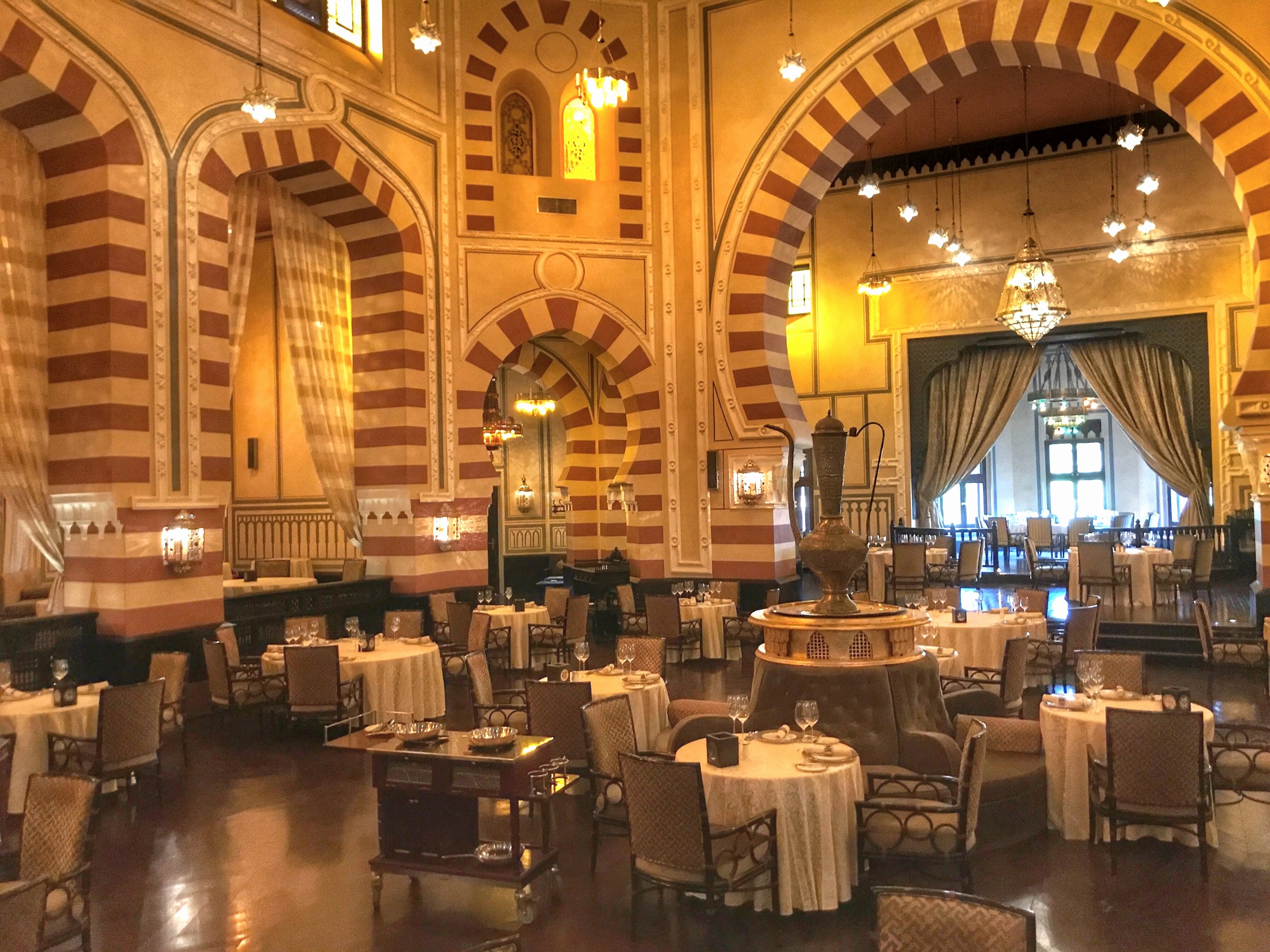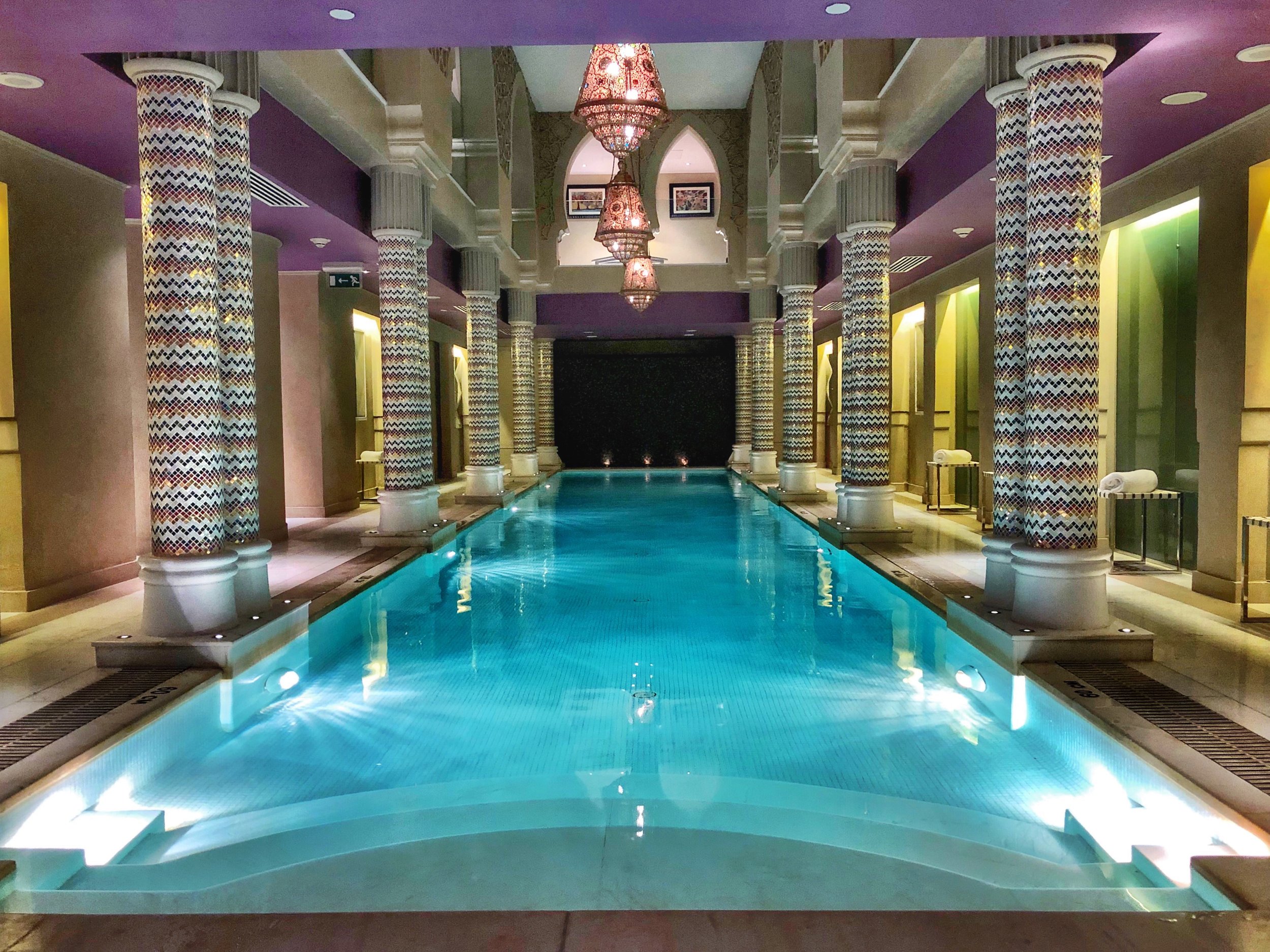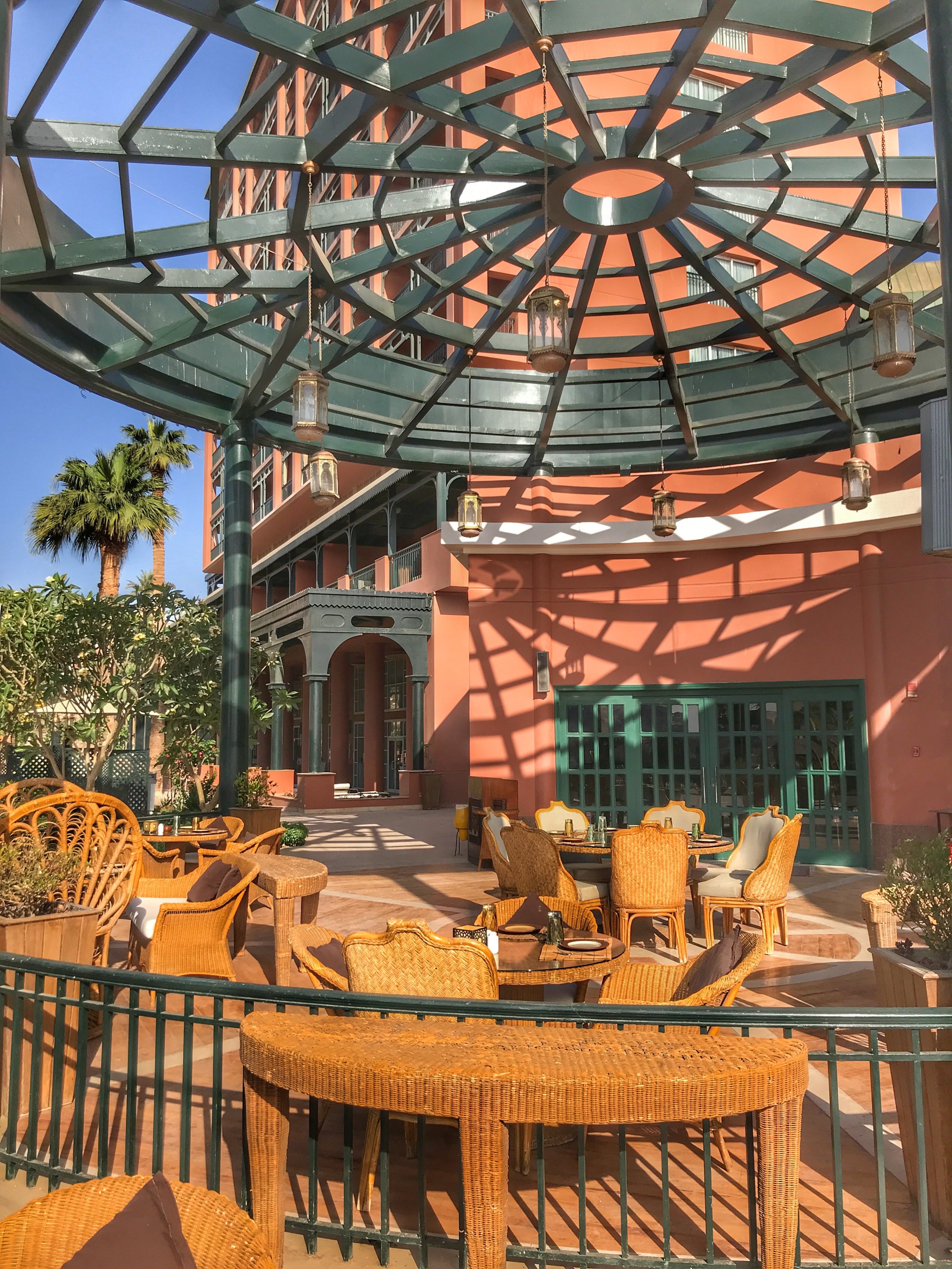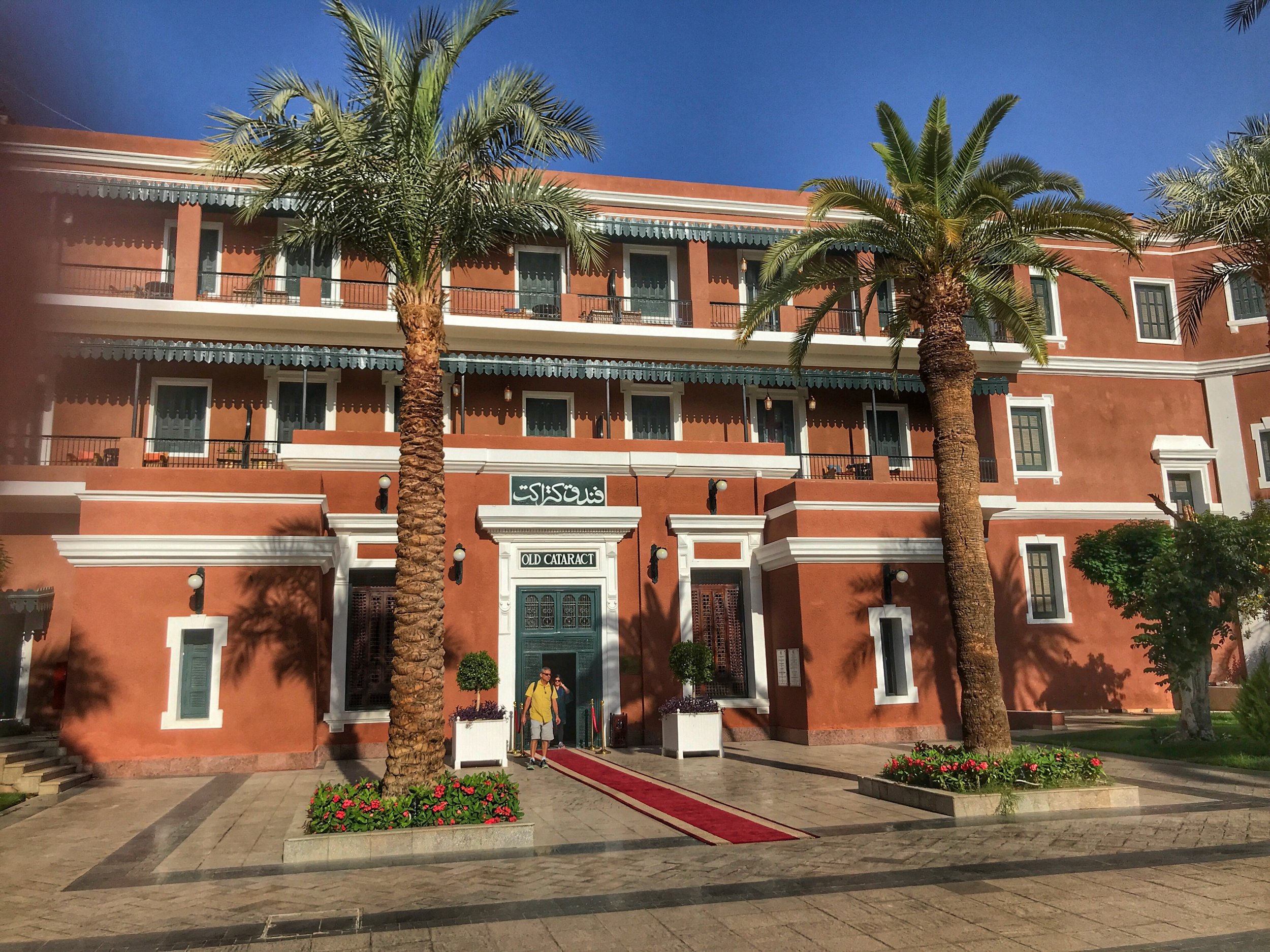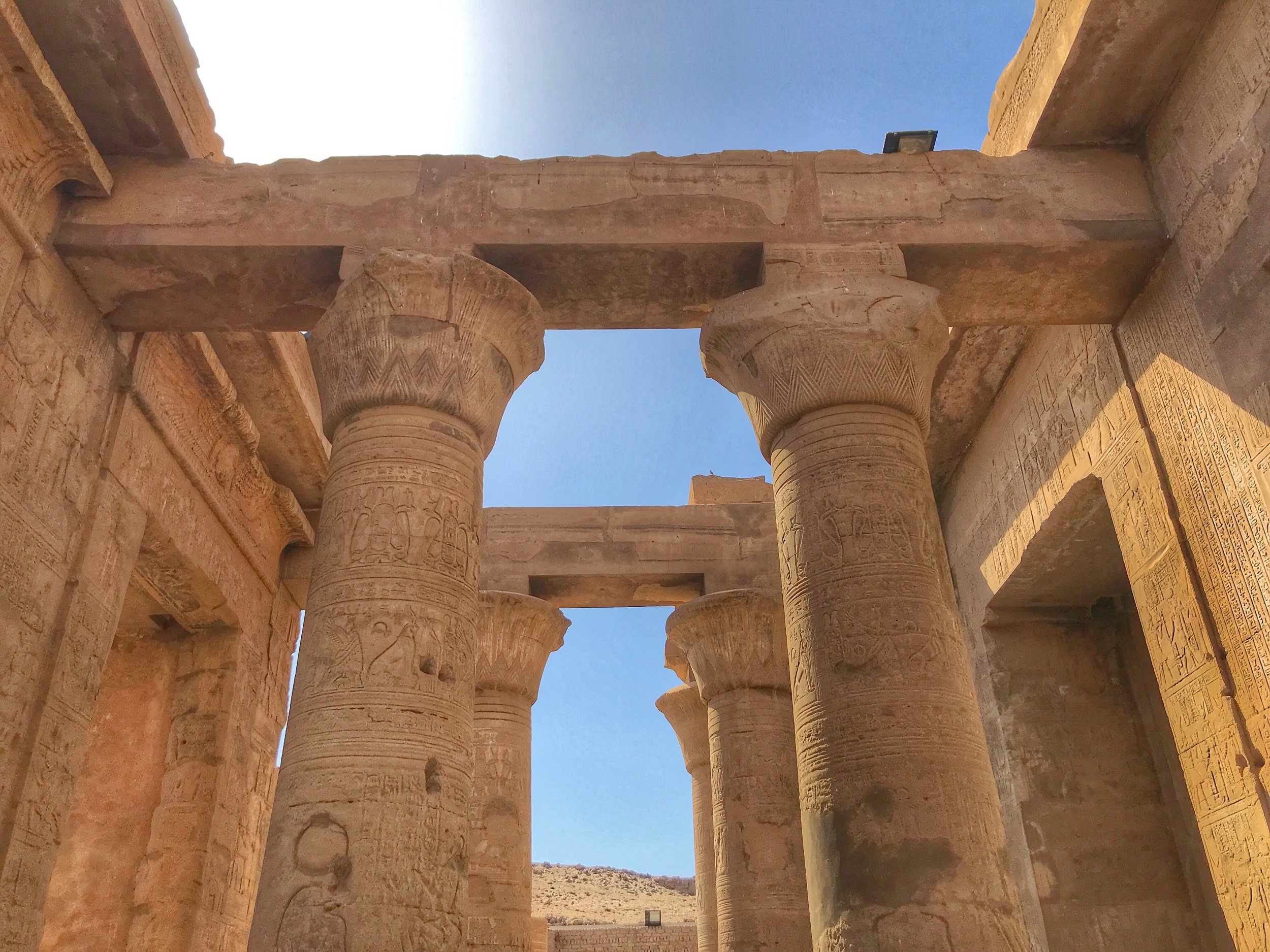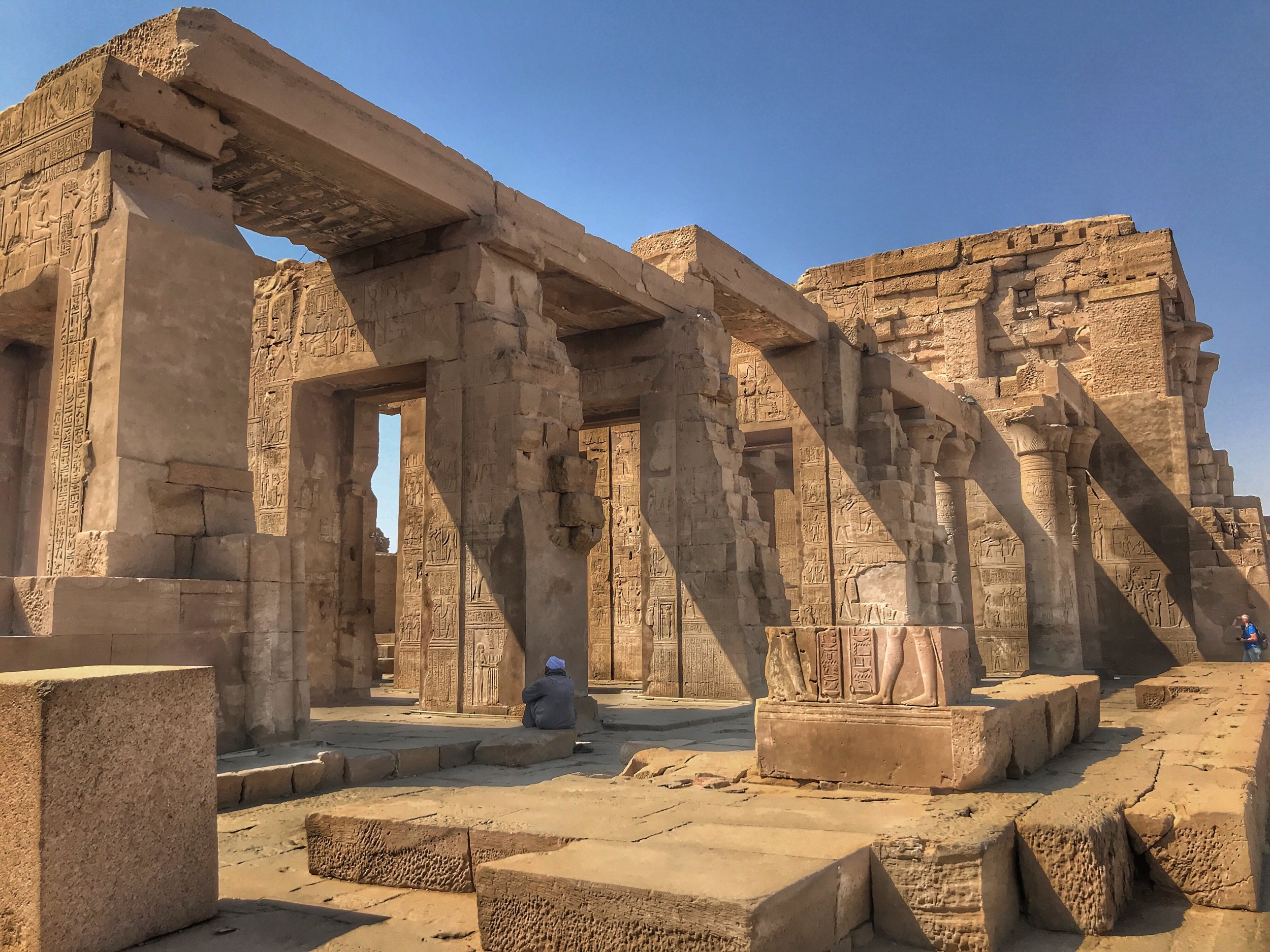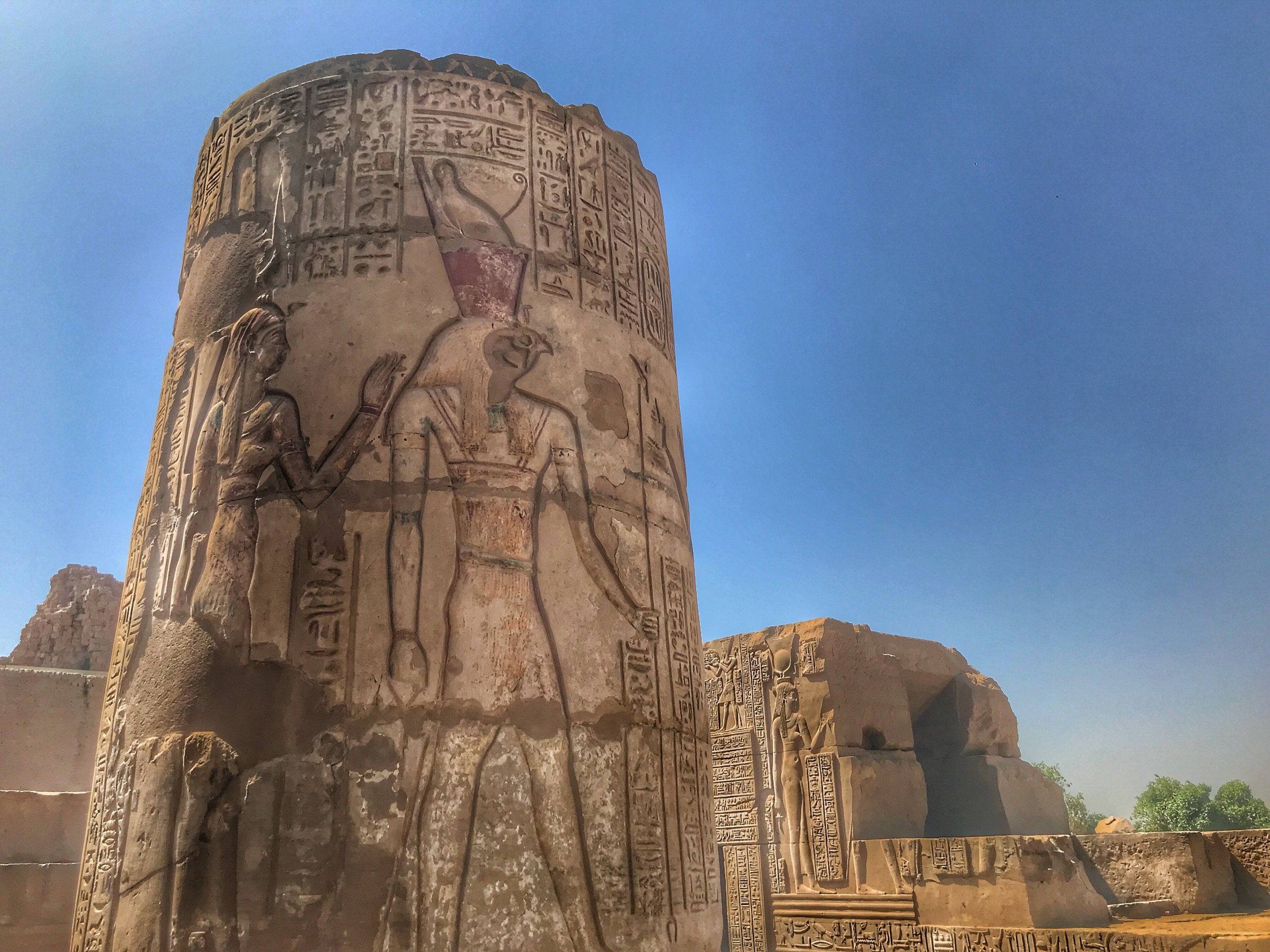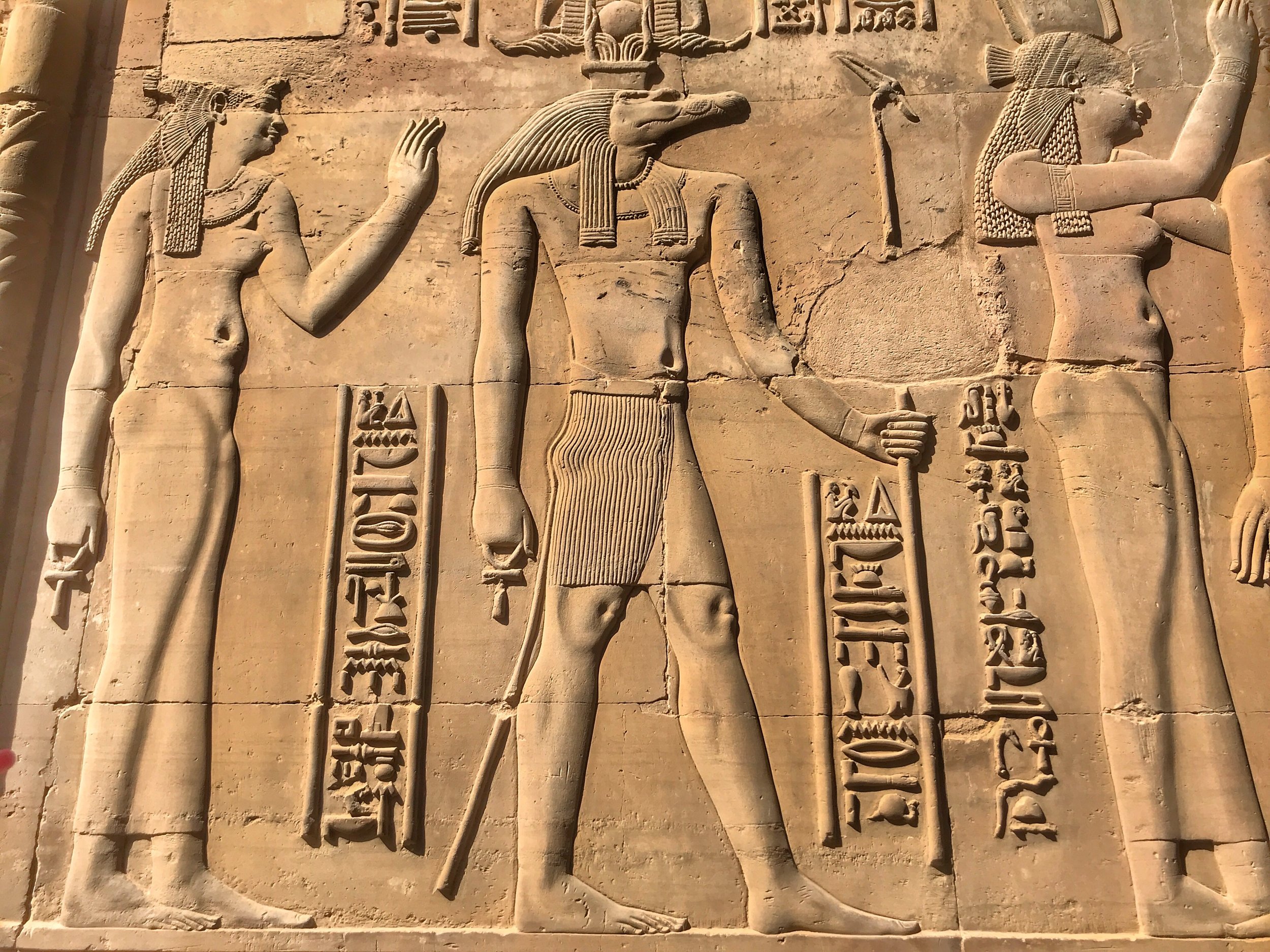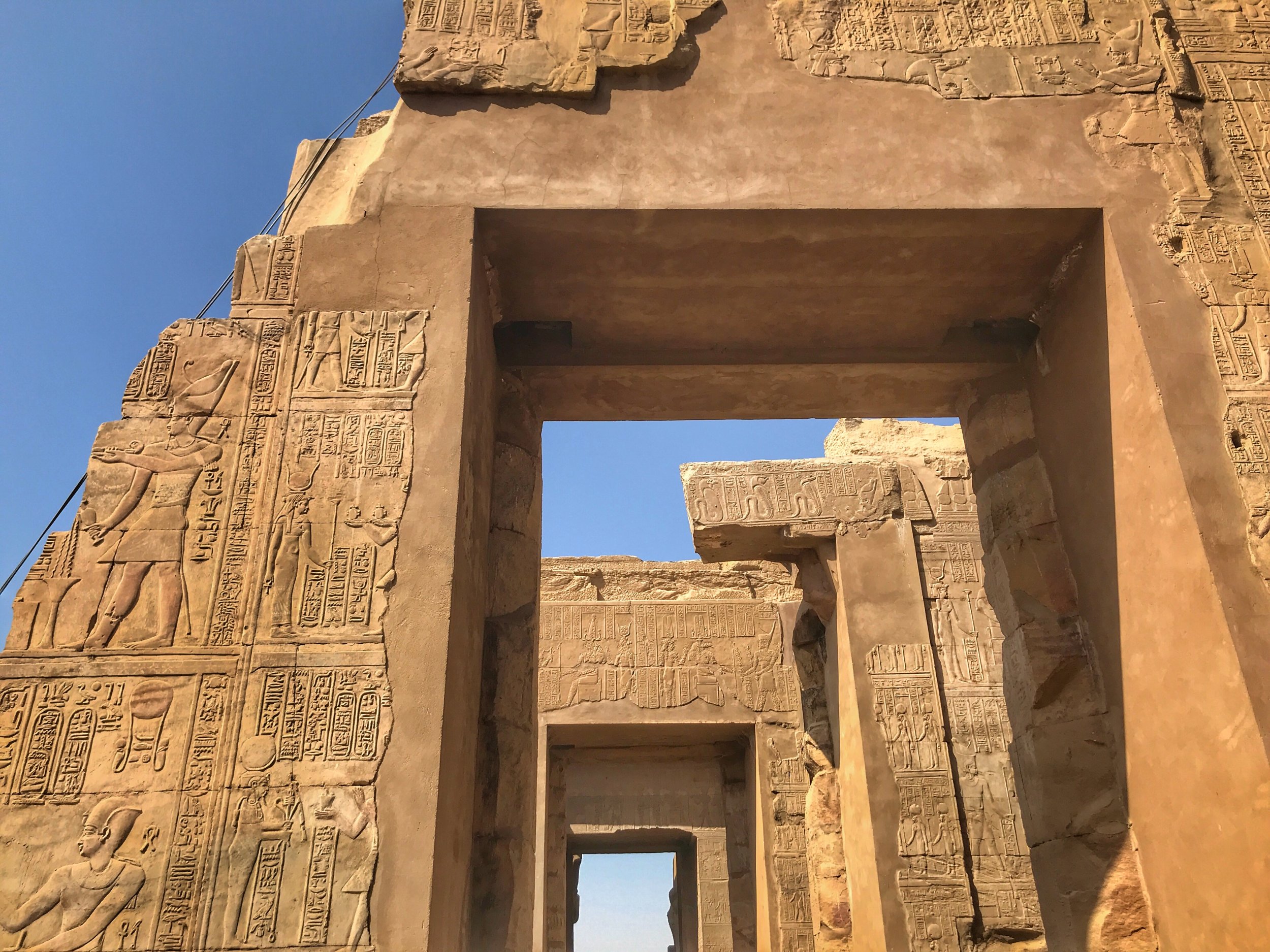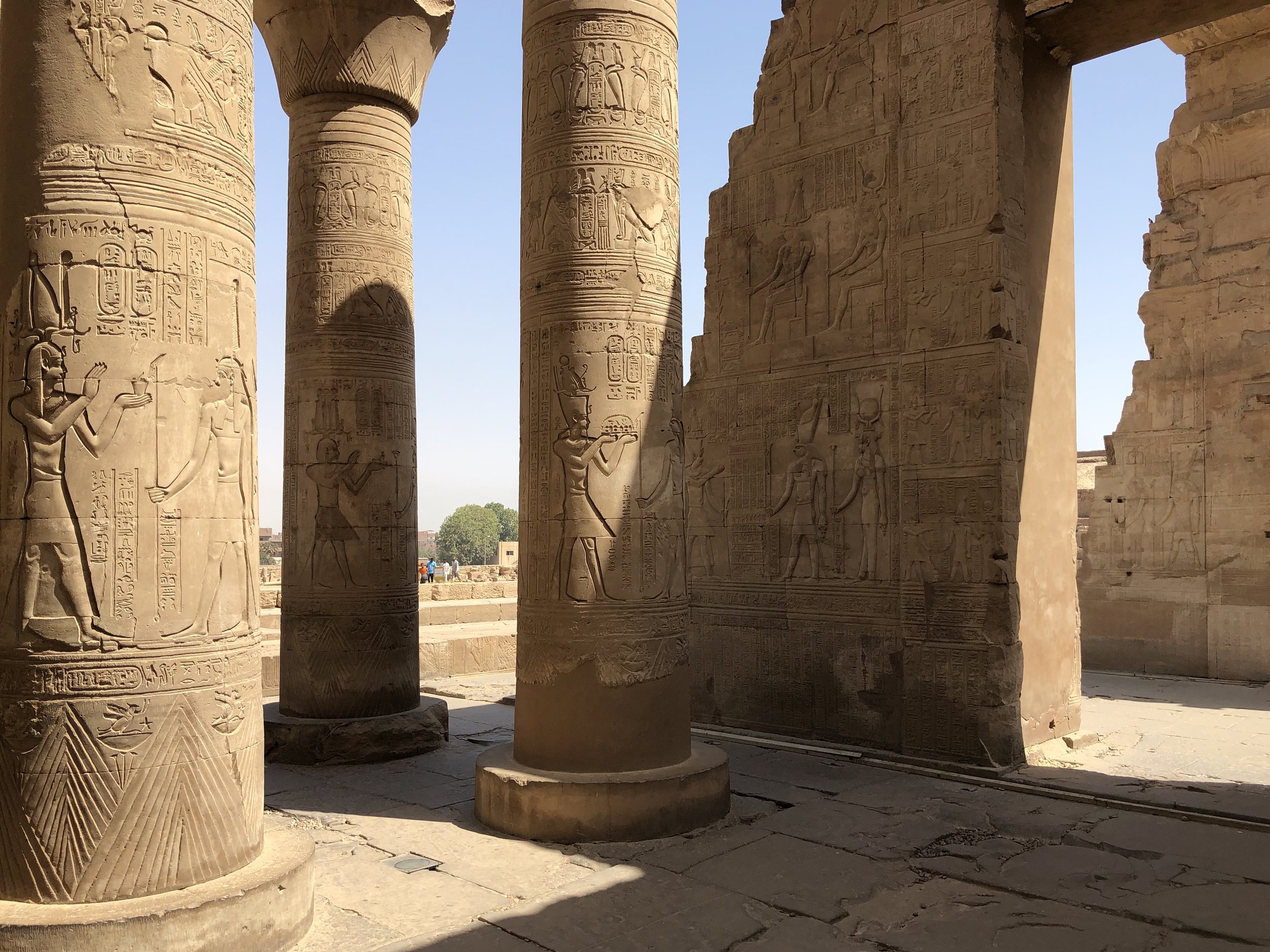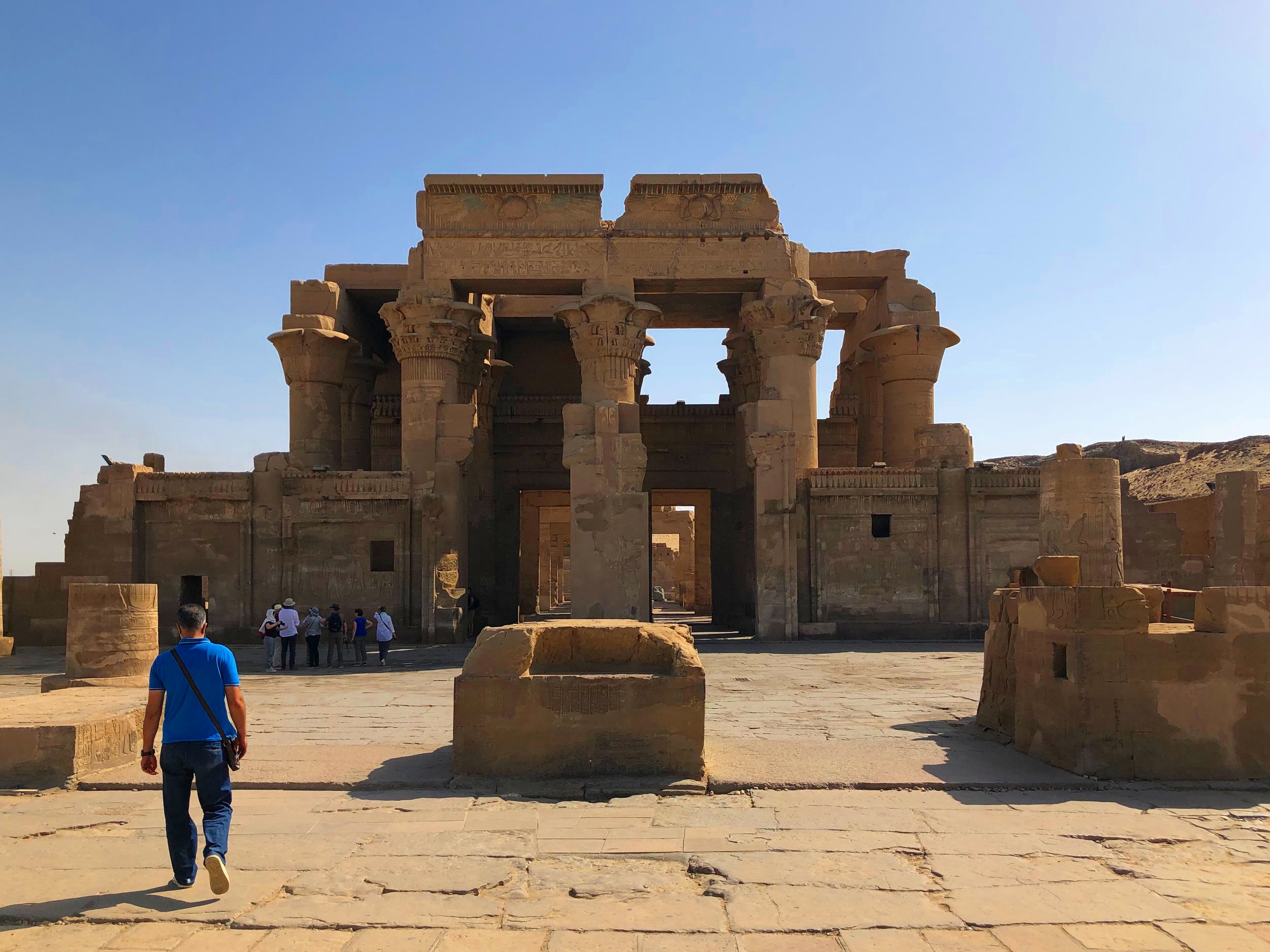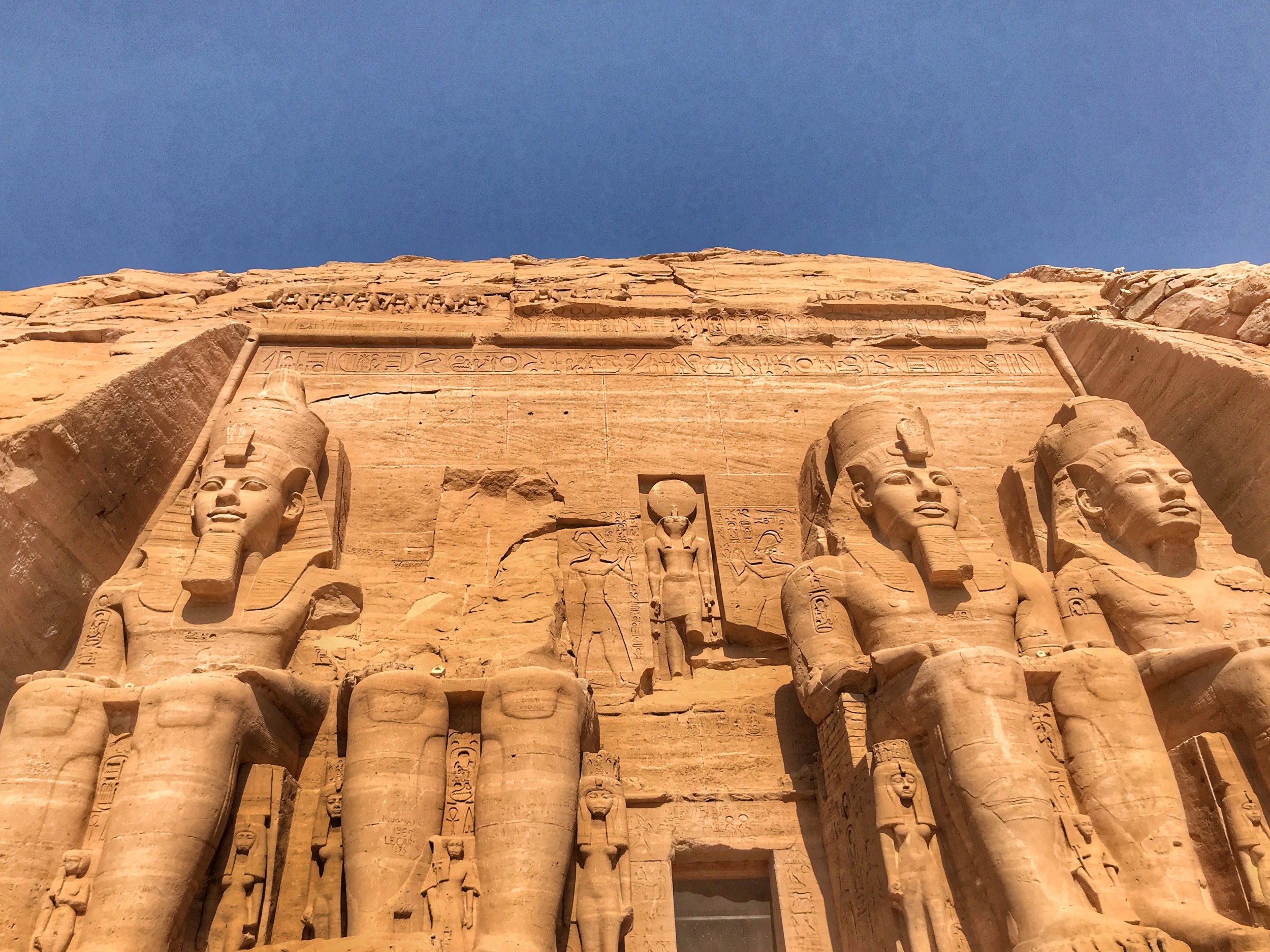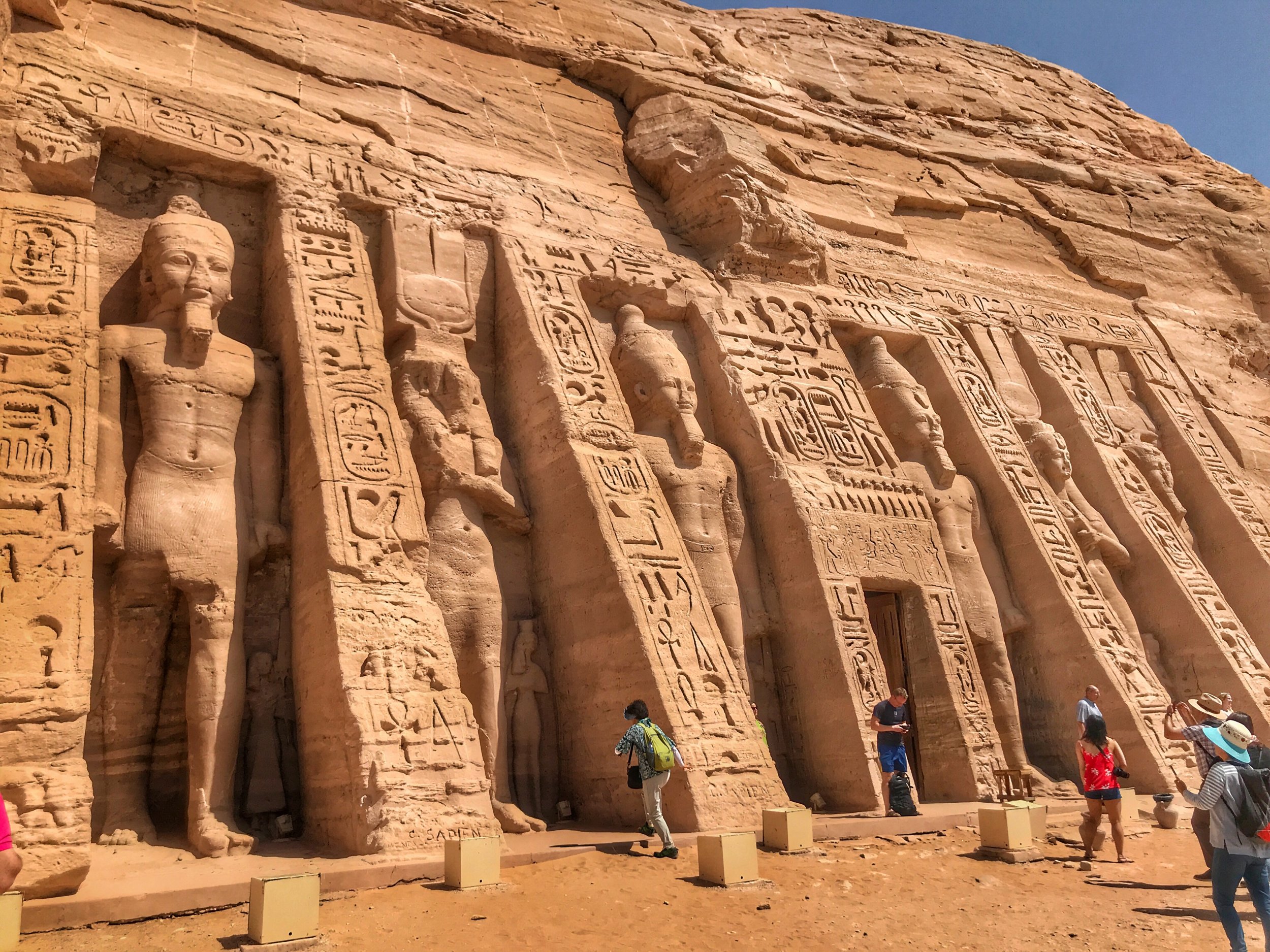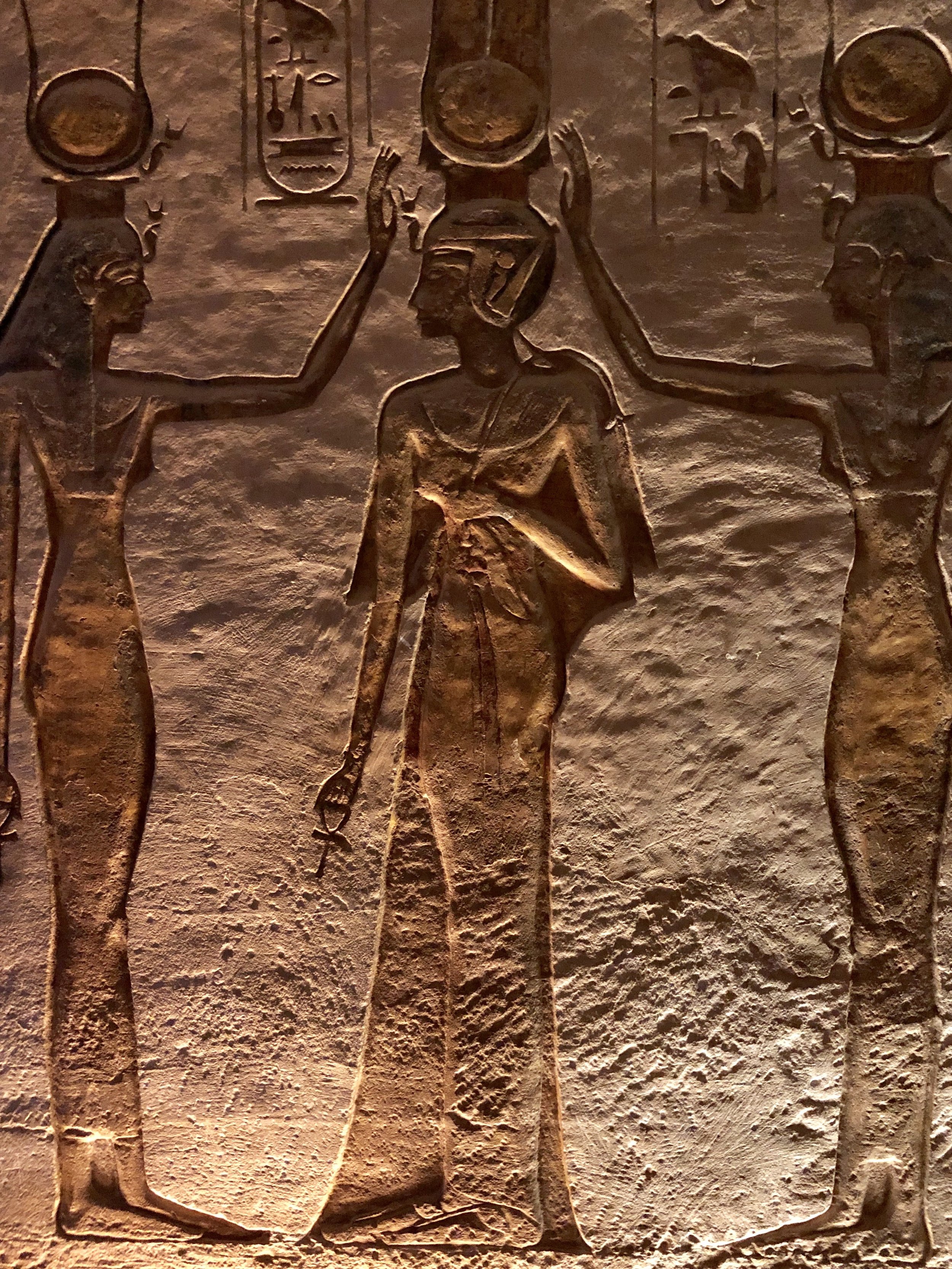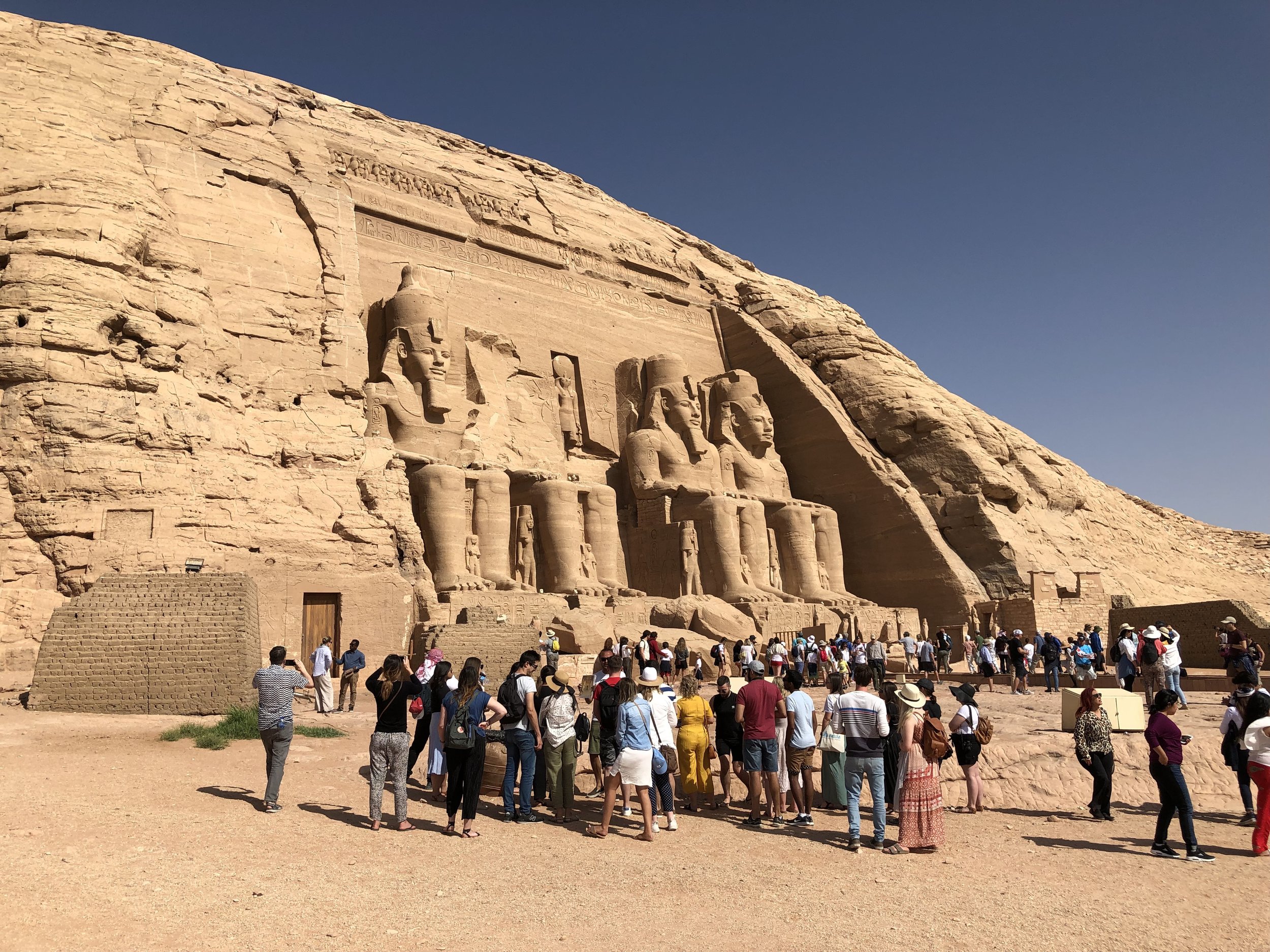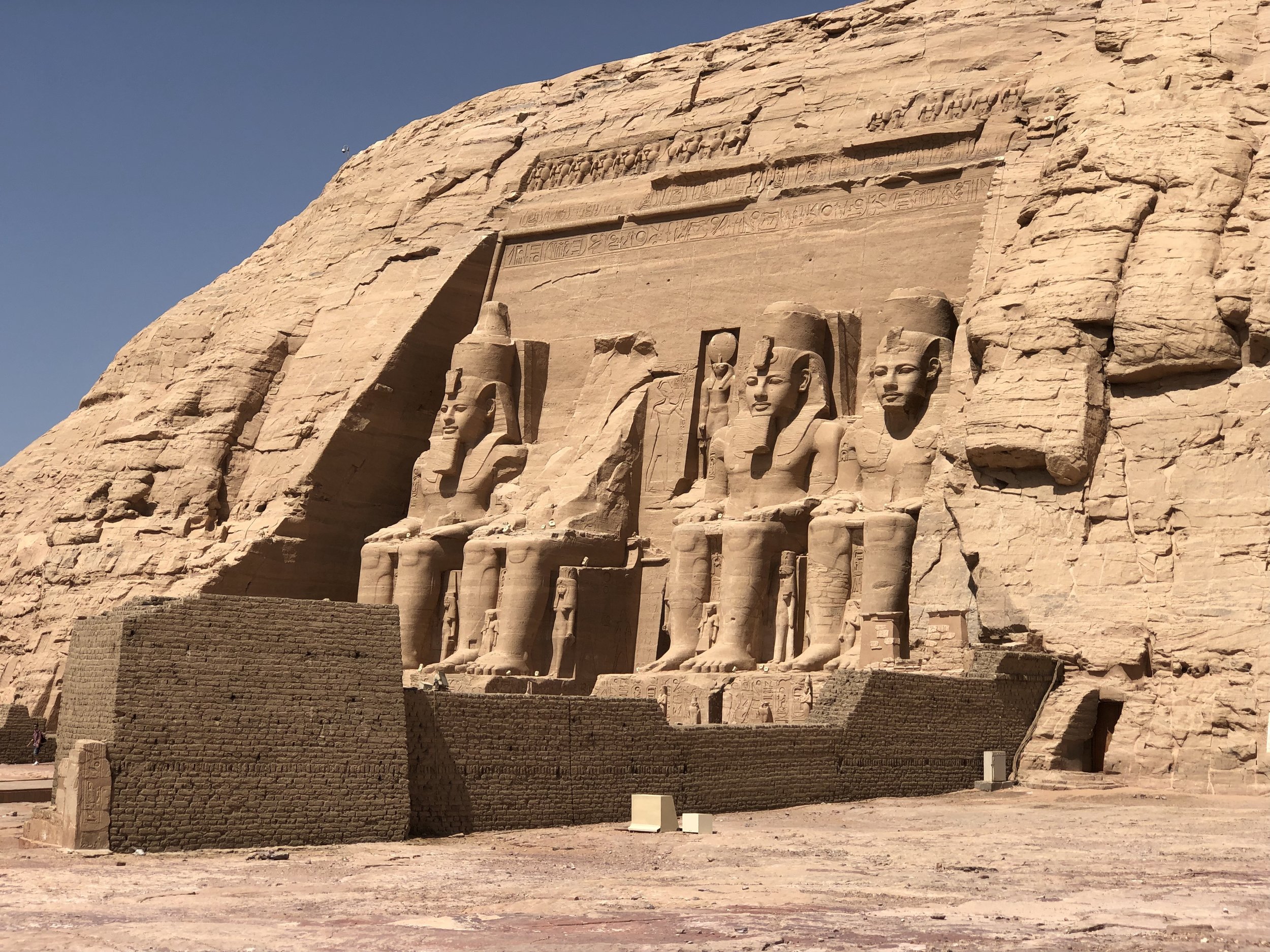Catch this island temple of Isis in Aswan after visiting Abu Simbel — and be glad it’s no longer underwater.
When you visit Aswan, be sure to explore this island temple, one of the latest and best preserved in Egypt
That damn dam.
The Egyptians knew that building the Aswan Dam would destroy a collection of impressive temples of the ancient world. But controlling the fickle waters of the River Nile for agriculture and hydroelectric power trumped architectural preservation.
So, back in 1899, work began on the first Aswan Dam, sometimes referred to as the Aswan Low Dam. Completed in 1902, the structure plugged up the Nile and created an artificial body of water, Lake Nasser. And from December to March, Philae Temple, one of many such casualties, sat mostly engulfed, only its top peeking above the water.
“The first Aswan Dam flooded Philae Temple from December to March, with only its top peeking above the water.”
For four months of the year, Philae Temple and its nearby buildings, like the Kiosk of Trajan, sat underwater. The temple has since been relocated to a different, and drier, island
The Aswan Low Dam flooded Philae Temple, and the new dam, built in the 1970s, would have entirely submerged this historic treasure
For 70 years, that’s how the temple remained. But flooding from the Nile persisted to plague the area, and the Egyptian leader Gamal Abdel Nasser had dreams of bringing hydroelectric power to the entire country. Plans were drawn up to construct a new barrage, the Aswan High Dam.
This dam would have completely flooded Philae. So good old UNESCO, the savior of so many historic sites, helmed a project, from 1972 to 1980, to move the temple, brick by numbered brick, to its current home, on Agilkia Island in Aswan.
One of the Ptolemaic pharaohs presents an offering to the goddess Isis, with her massive wings
Cult Center of the Goddess Isis
Lasting well into the Christian era of Ancient Rome, Philae was one of the last places where the Egyptian religion was practiced. Pilgrims came from far away to pay respects to the goddess Isis, who had inspired mystery cults across the empire.
Poor Isis. Much like the swastika, which was a Hindu symbol for centuries but is now is a cringe-inducing reminder of Nazism, the Egyptian goddess’s name has been besmirched by the Islamic State terrorist group.
In a characteristically bizarre Egyptian myth, Isis’ husband (and, um, brother) Osiris was murdered and chopped into 14 pieces by his brother Set, who then hid the body parts throughout Egypt. Isis, ever the dutiful wife, searched for the chunks of her beloved’s corpse — one of which, Osiris’ left leg, was hidden on an island near Philae. The goddess was able to recover all of the body parts, save one. Set had thrown Osiris’ penis into the Nile, where it was gobbled up by an Oxyrhynchus, a type of elephantfish.
Duke on the boat ride out to Philae Temple, seen in the background
Whatever Floats Your Boat
Part of the fun of visiting the Temple of Philae is the journey there. We didn’t have a lot of time in Aswan, so we got up at the crack of dawn to visit Abu Simbel (though ideally, you’d time your trip down there to miss the morning crowds and arrive around noon). On the way back to our hotel, the amazing Old Cataract, we asked our guide, Mamduh, if we could fit in Philae. It was getting a bit close to closing time, which was at 4 p.m. when we visited, but we didn’t want to miss seeing the complex.
We parked, and Mamduh walked with us past a small marketplace and down onto the docks. He spoke with a group of men and waved us over to one of the many boats berthed here, all narrow, white and red and lined with tires to act as fenders. We climbed aboard, our captain yanked the throttle, and the motor roared to life.
These red and white boats are your transport to the island of Agilkia, where Philae has been moved to, stone by stone
The water in this part of the Nile is a deep blue that seems to contain the mysteries of the multiverse. There’s something magical about this peaceful stretch of the famous river, and it’s captivating to see the complex of Philae come into view as you approach from the water.
We docked, climbed out of the boat and walked up the path to continue our expedition.
The first pylon presents an impressive entrance to the temple
Exploring the Island Temple of Philae
The island houses numerous structures. Most that remain were built by the Ptolemies (of which Cleopatra was the last) in the final two centuries BCE and then by the Roman emperors over the next 300 years.
We started by passing through the first pylon, the towered entrance, built in the telltale Ptolemaic style: two large tapering rectangular blocks joined by a smaller entryway, all sharp angles, with nary a curve or arch to be found. Two decaying lions presented themselves as non-threatening guardians.
This faceless lion doesn’t seem like much of a guardian, poor guy
Once inside the forecourt, we came upon a colonnade, an open courtyard lined by columns. On one side were rooms where priests once conducted scientific inquiries. On the other was a mammisi, or birth house. These structures are common on the outskirts of Egyptian temples and were built to honor the nativity of a deity — in this case, little falcon-headed Horus, the son of Isis and Osiris (somehow born after his father’s pecker got eaten by that fish).
Duke and Wally at the temple complex
The courtyards have colonnades off to each side
Through another pylon, we entered the interior of the temple. This columned vestibule transported us to another world. We noted the Coptic crosses and Greek inscriptions, from when the temple was closed down and converted into a church around 535 CE by order of Emperor Justinian. In 116 CE, a group of Romans visited Philae and carved their names on the temple wall, leaving behind the oldest surviving Latin inscriptions in Egypt.
The interior of Philae
We then passed through antechambers and side rooms to reach the sanctuary of Isis — the holy of holies, as the Egyptians referred to it. This was a small room at the very back of the temple, with a block of stone that once held the solar boat used to transport the goddess’s statue when it was paraded about during festivals.
A look inside the sanctuary of the temple, where the sacred barque of Isis once sat upon a pedestal
Sunstroke Strikes!
Something we really appreciated about our guide, Mamduh, was that he always encouraged us to wander the sites we visited after he gave us a tour, telling us to take our time and find him at the ubiquitous nearby café. We highly recommend booking him or another guide through Egypt Sunset Tours.
With most of the other temples of Ancient Egypt in desert settings, one of the coolest things about Philae is the vistas with views of the water
In addition to the main temple, there are other, smaller, buildings to see on the island. While we wandered the Temple of Hathor, at the water’s edge, Duke started feeling lightheaded and nauseous. His chest flared with red splotches, and he self-diagnosed a case of heatstroke. He tottered over to the nearby Kiosk of Trajan and sat in what little shade he could find.
The Tempe of Hathor at Philae
Take a walk around the small island to see the other buildings apart from the temple to Isis
The Kiosk of Trajan is an iconic structure at Philae
The goddess Hathor was commonly depicted with cow ears
At the Temple of Hathor, look for the dwarf god, Bes. He’s a fascinating figure — learn more about him here
Philae isn’t a good place to escape the blazing sun, as most of the complex is exposed. We had taken a quick circuit of the island and decided to end our tour since Duke wasn’t feeling well.
A small open-air café sits at the tip of the island, and this is where we met Mamduh. We found a table in the shade and treated ourselves to ice cream. Within an instant, we were completely surrounded by cats jealously eyeing our treats. Duke and I can’t resist a friendly feline, so we dropped a few bite-sized pieces of ice cream onto the ground, which the cats would lap up happily. Mamduh laughed and shook his head in disbelief as if he had never seen such a thing before. (He probably hadn’t.)
End your adventure at the outdoor café at one end of the island
Cats lounge by the water
And they also beg for food
After our offerings to the familiars of the feline-headed goddess Bastet, we walked back to the boat. As we rounded the hill, we saw our captain, along with two other men, prostrating themselves on the wooden dock, saying their late afternoon prayers in the direction of Mecca. I felt bad when he saw us and cut short his prayer, quickly jumping up to help us aboard the boat for the short, pleasant trip back to the mainland. –Wally
A map of the Philae complex on Agilkia Island (even though it’s in French, you should still be able to decipher it
The first pylon, or entrance tower, at Philae Temple
“Isis was able to recover all of Osiris’ body parts, save one. His penis had been thrown into the Nile, where it was gobbled up by a fish.”

